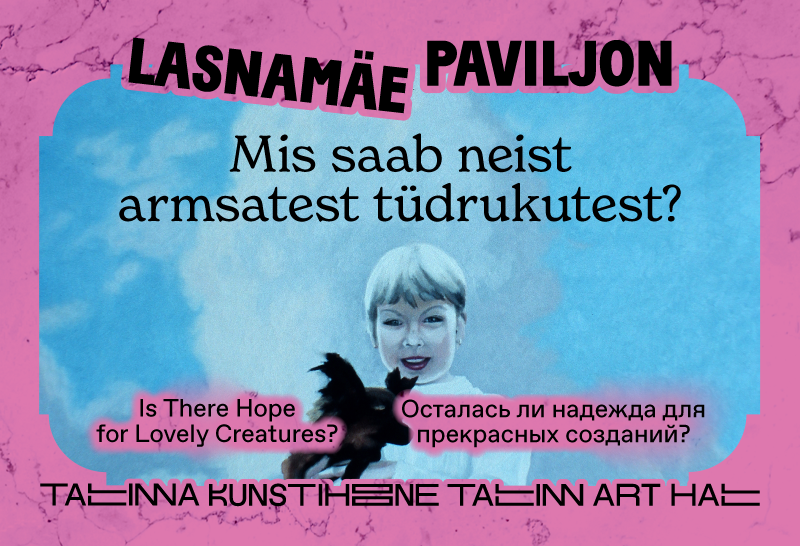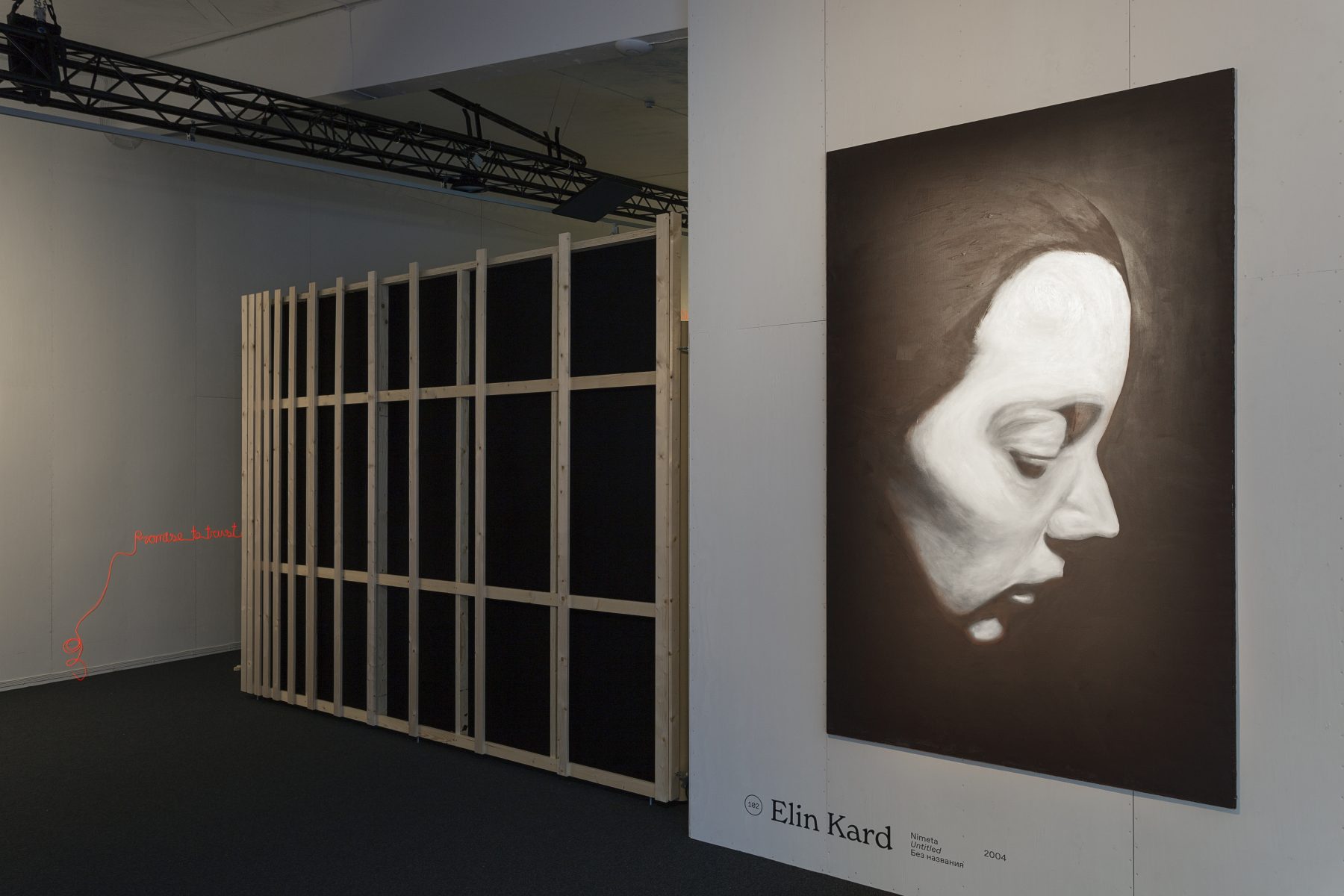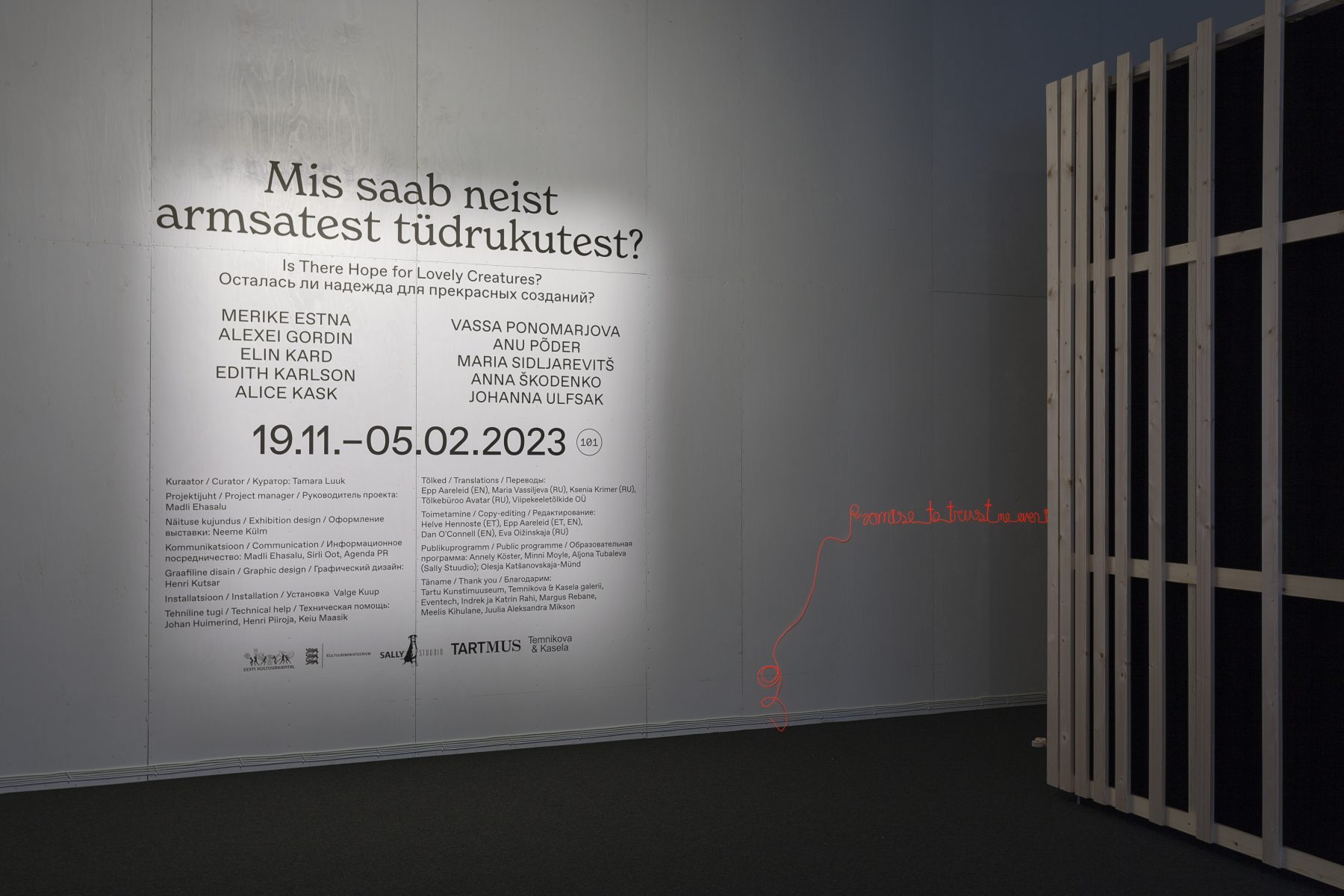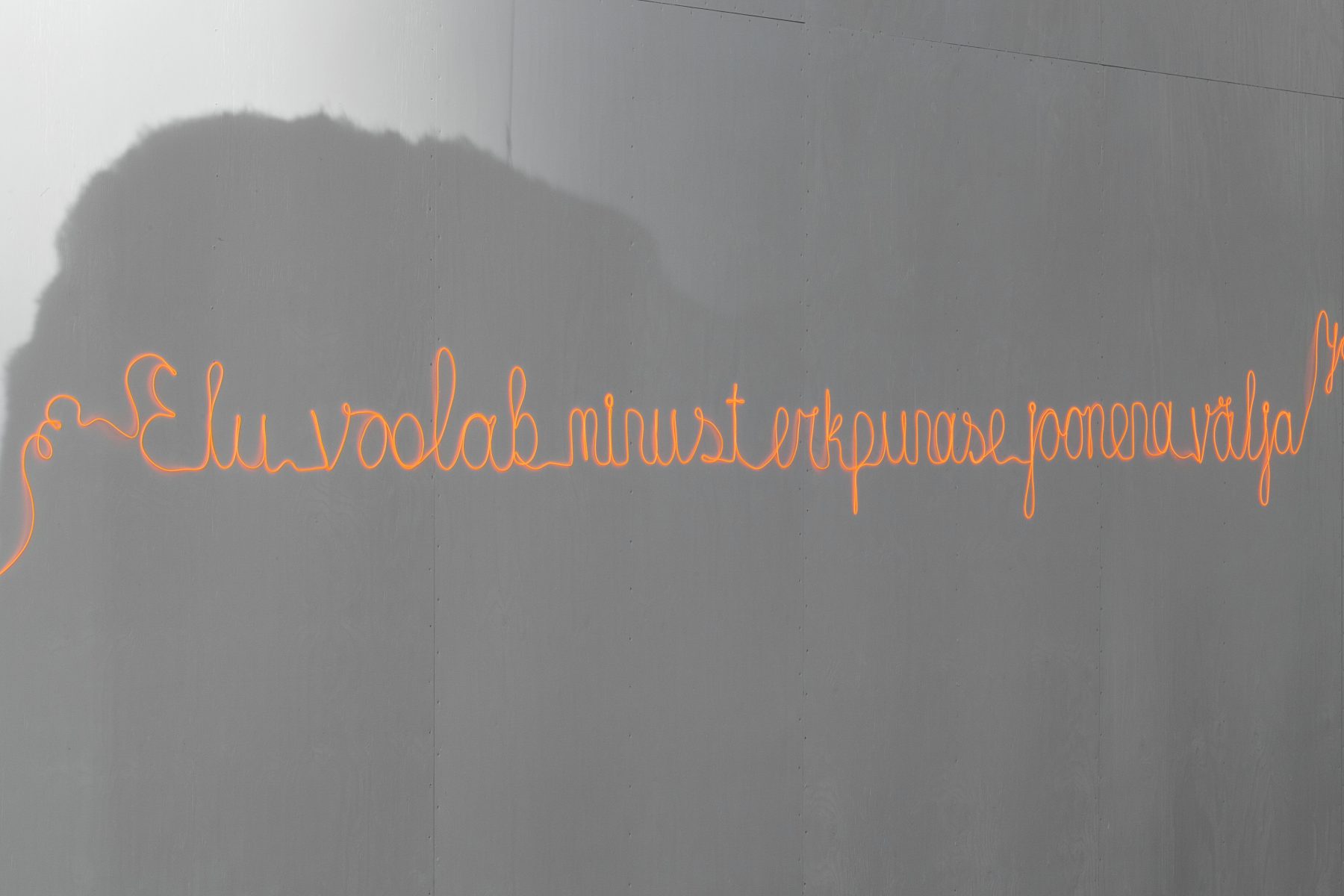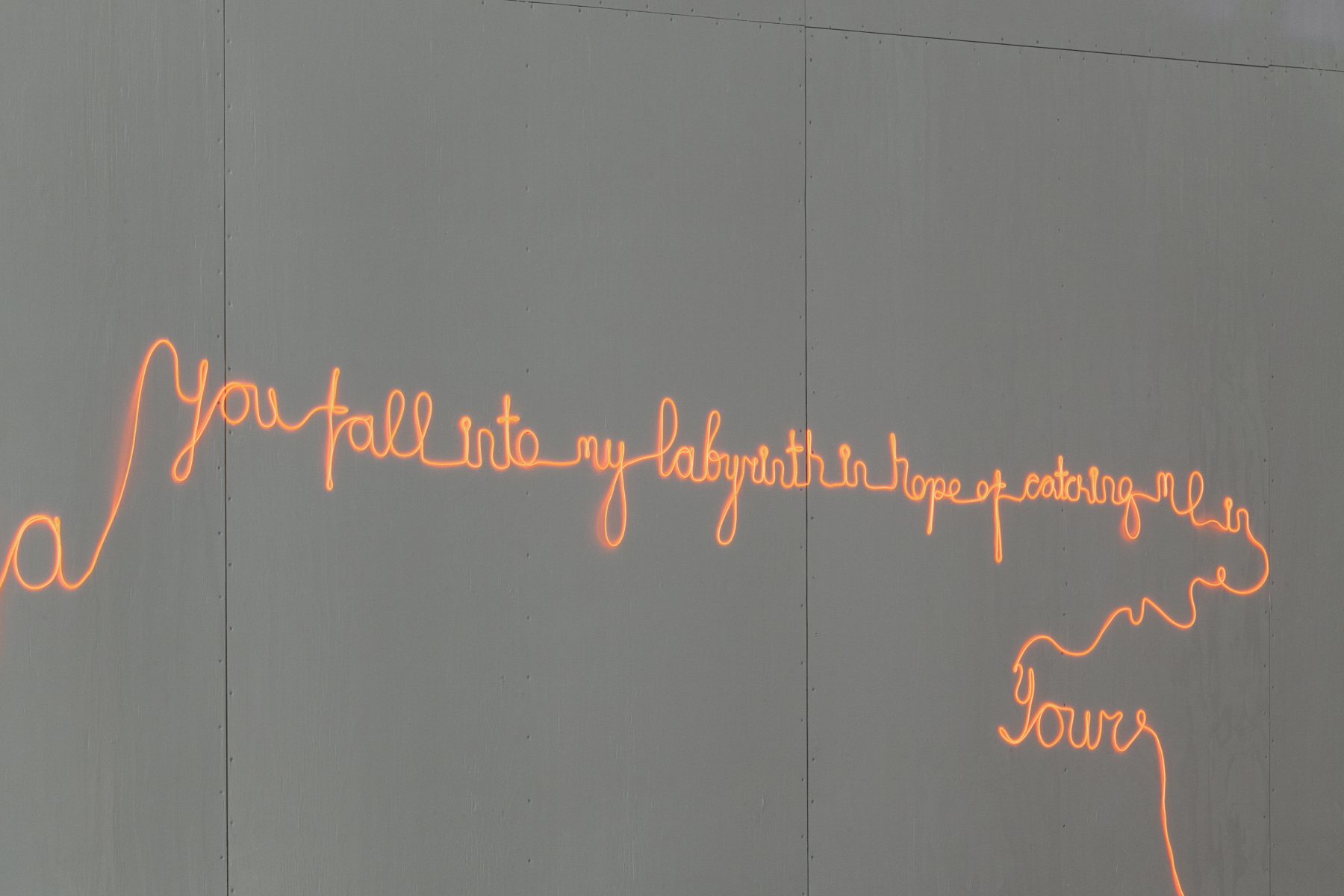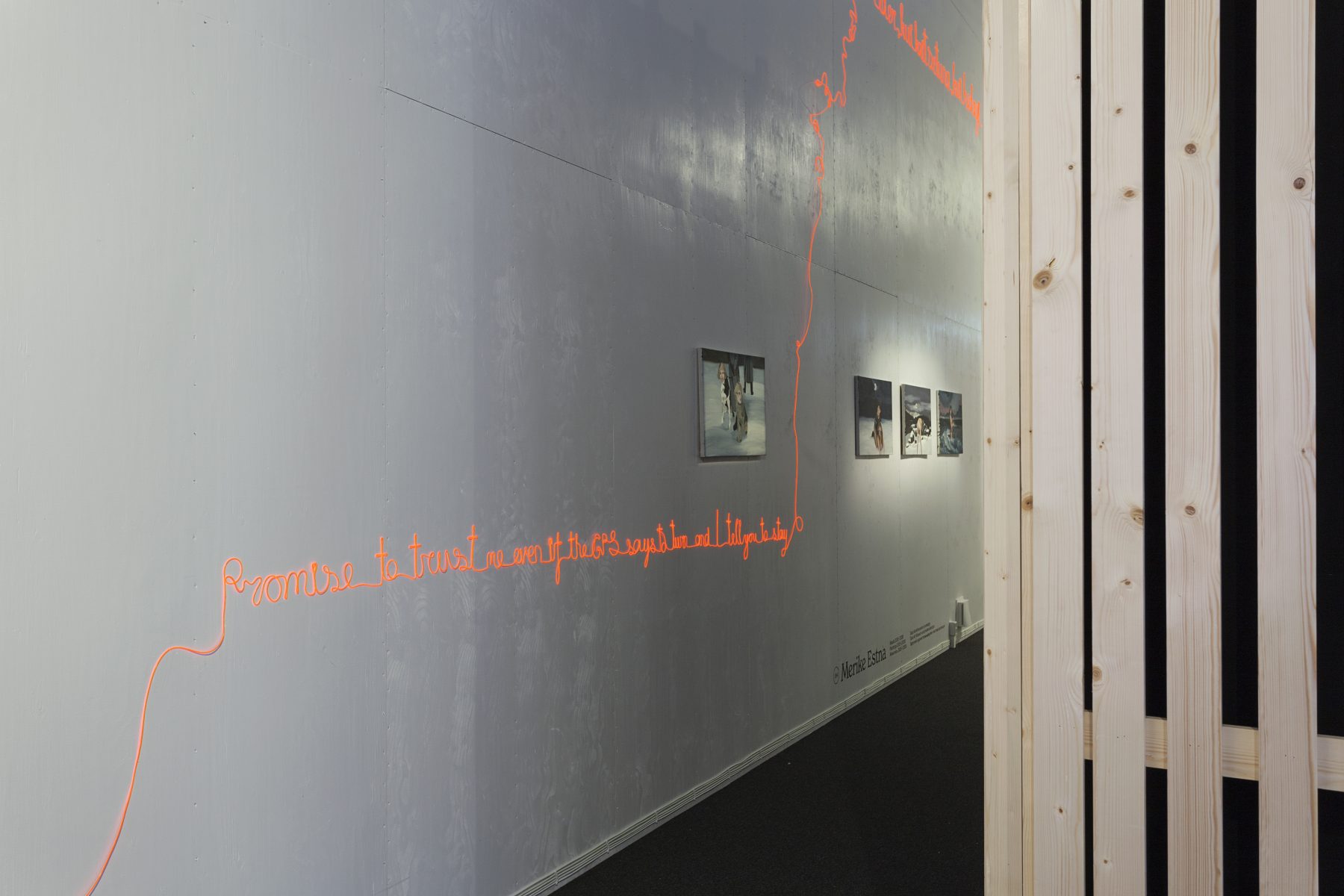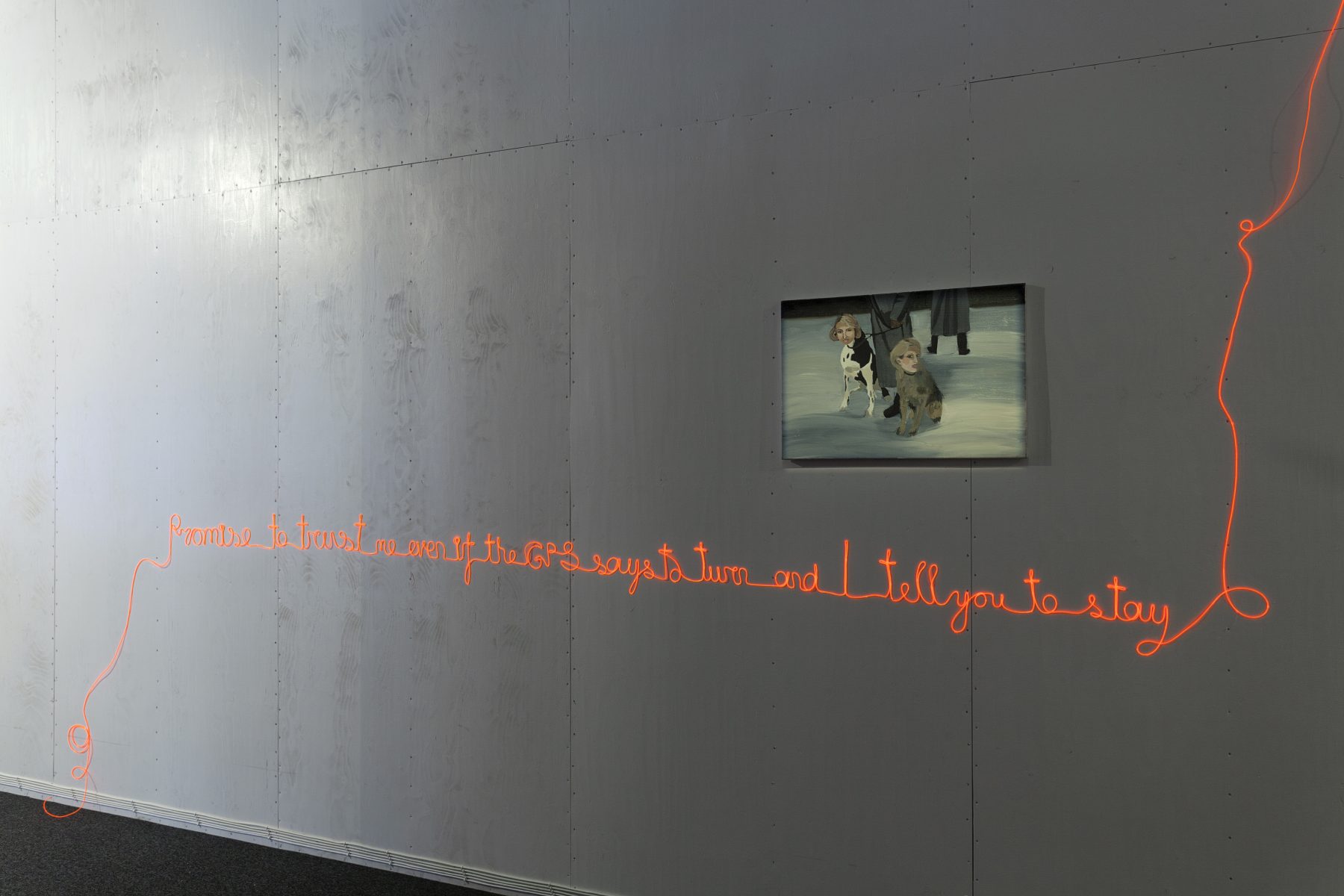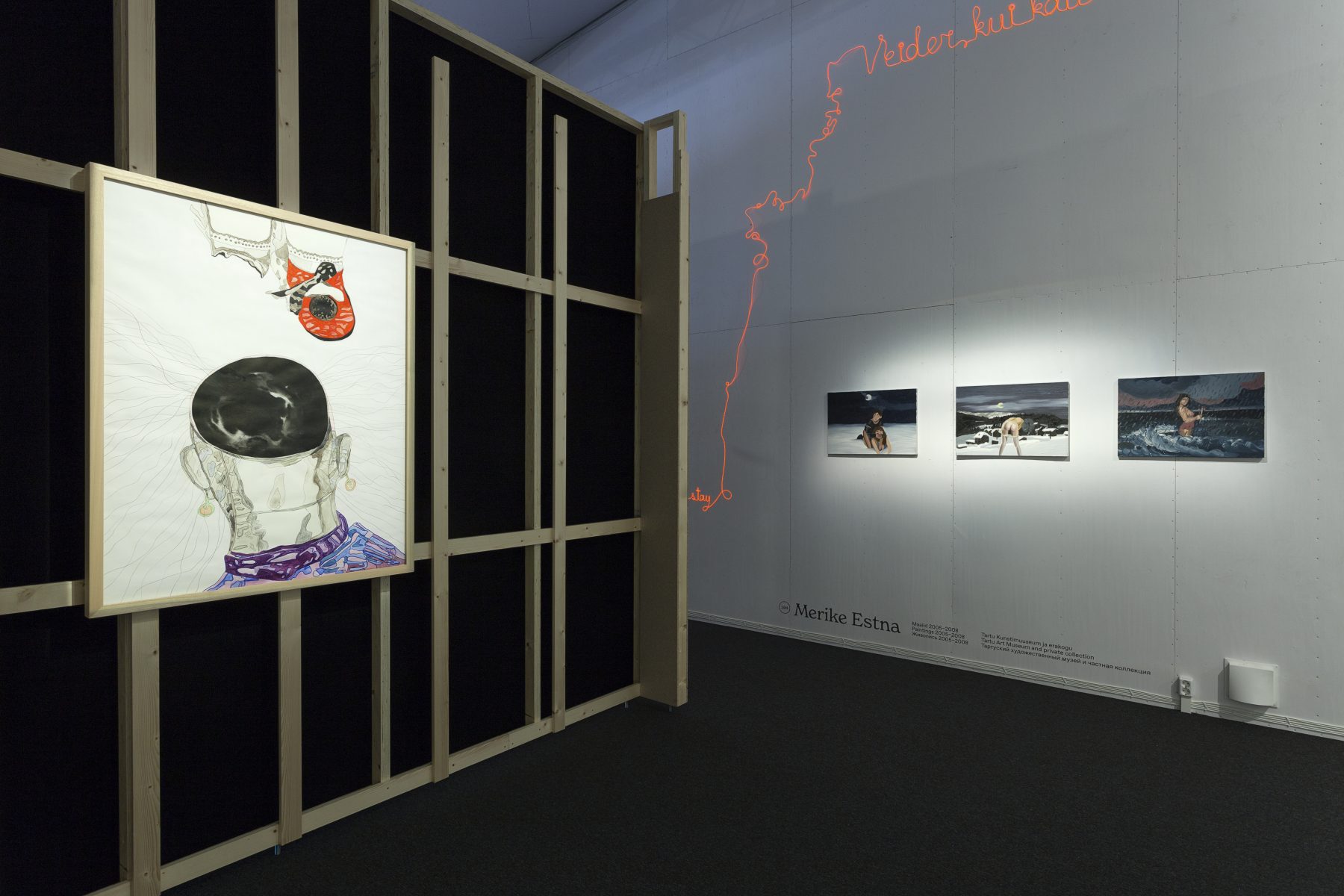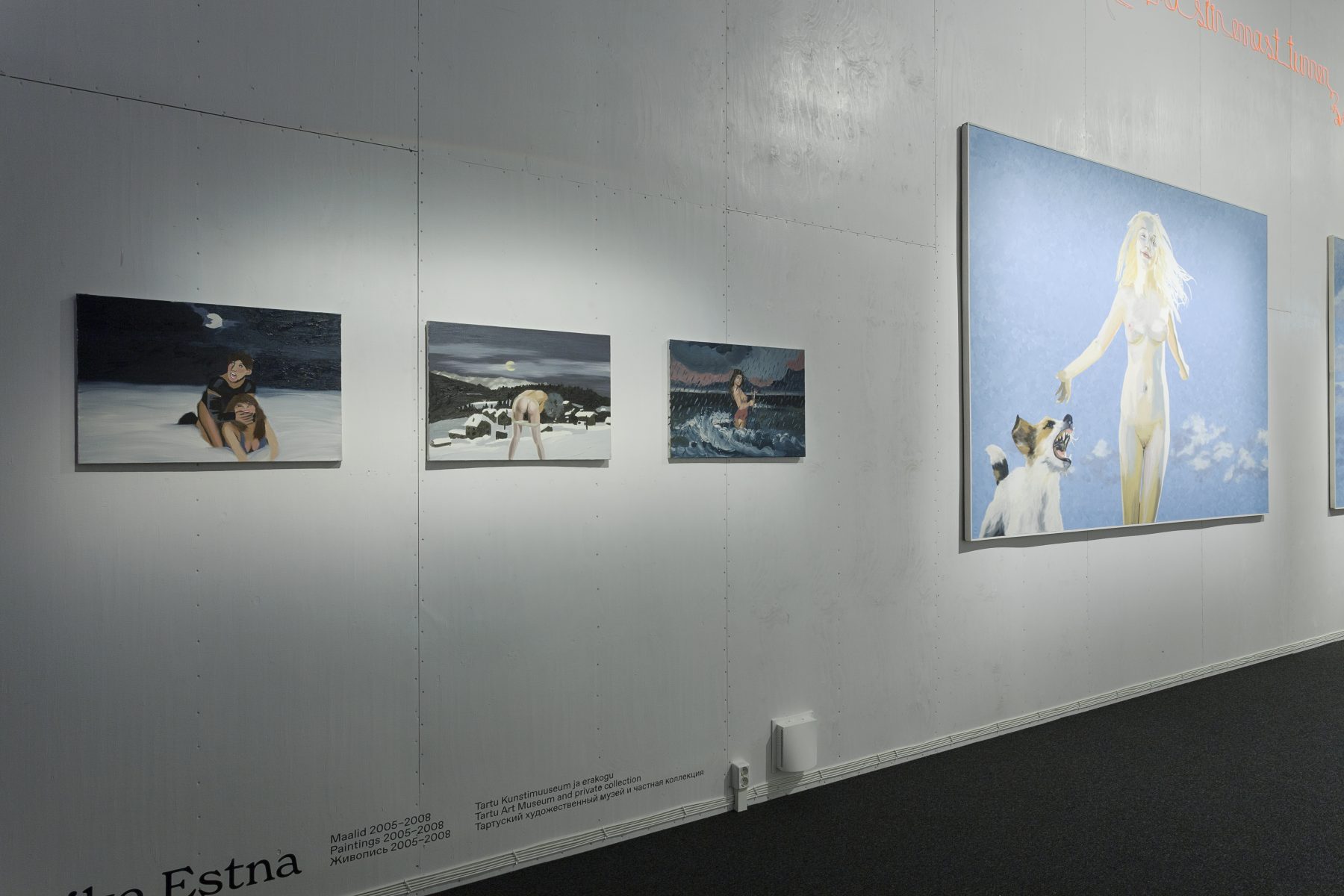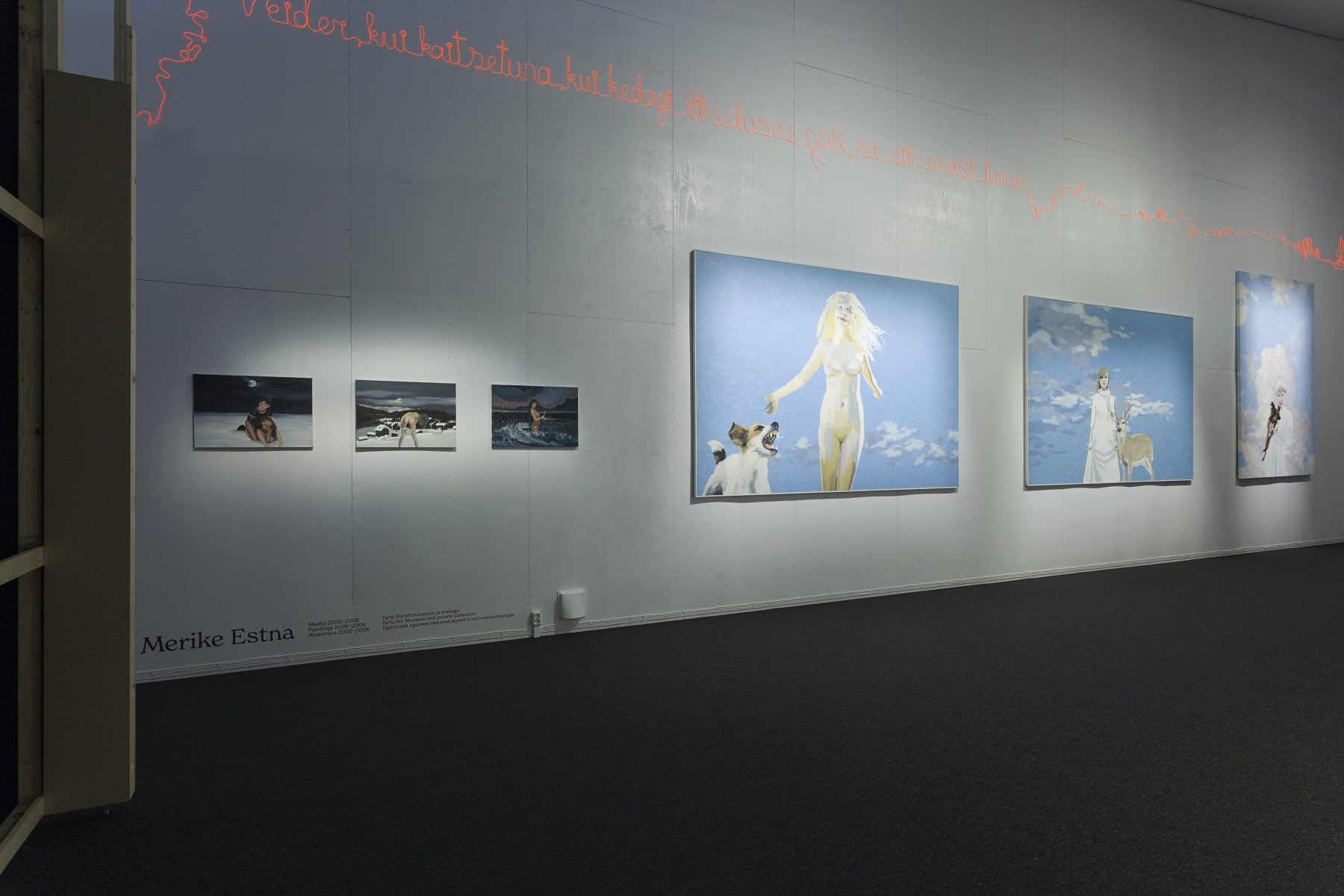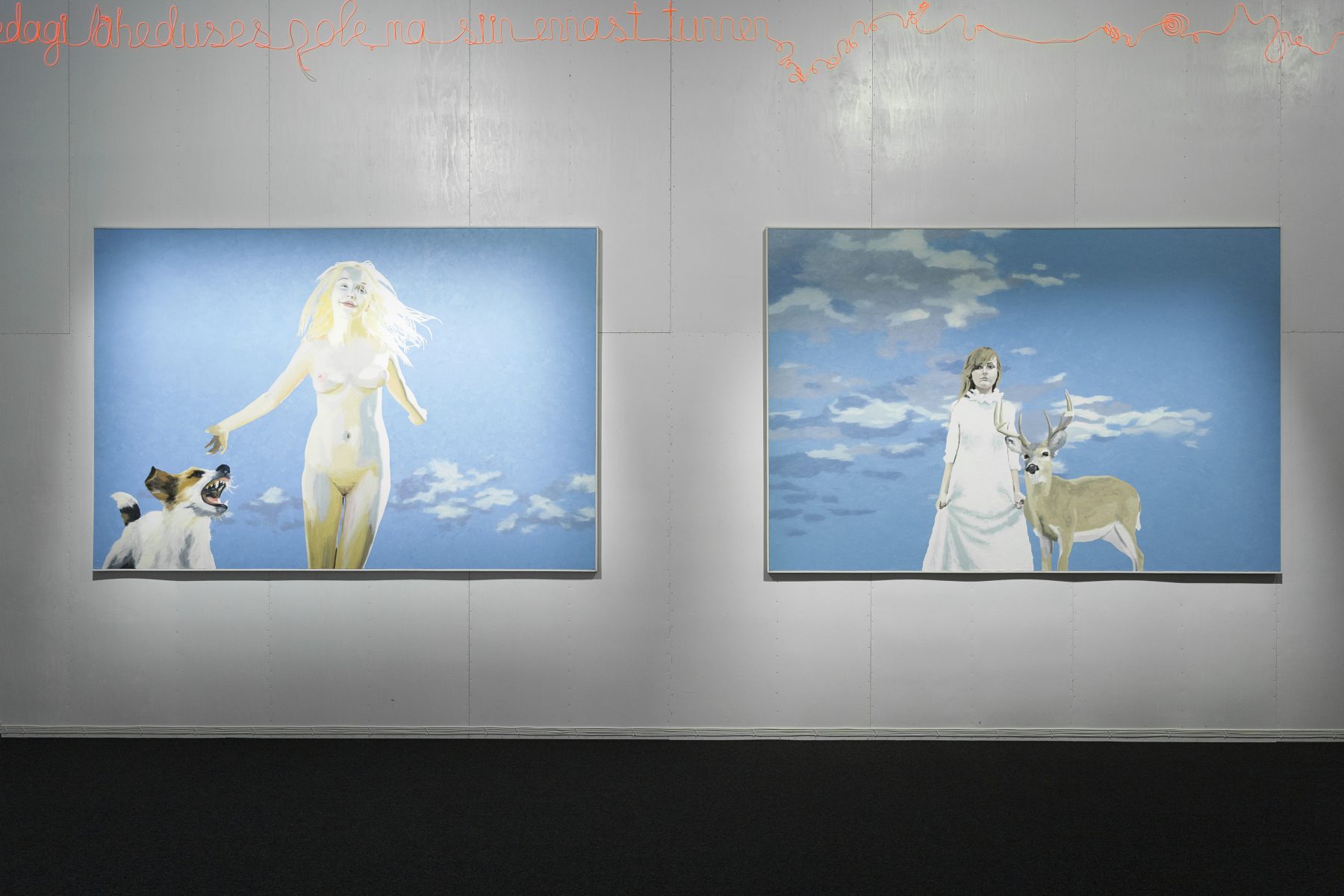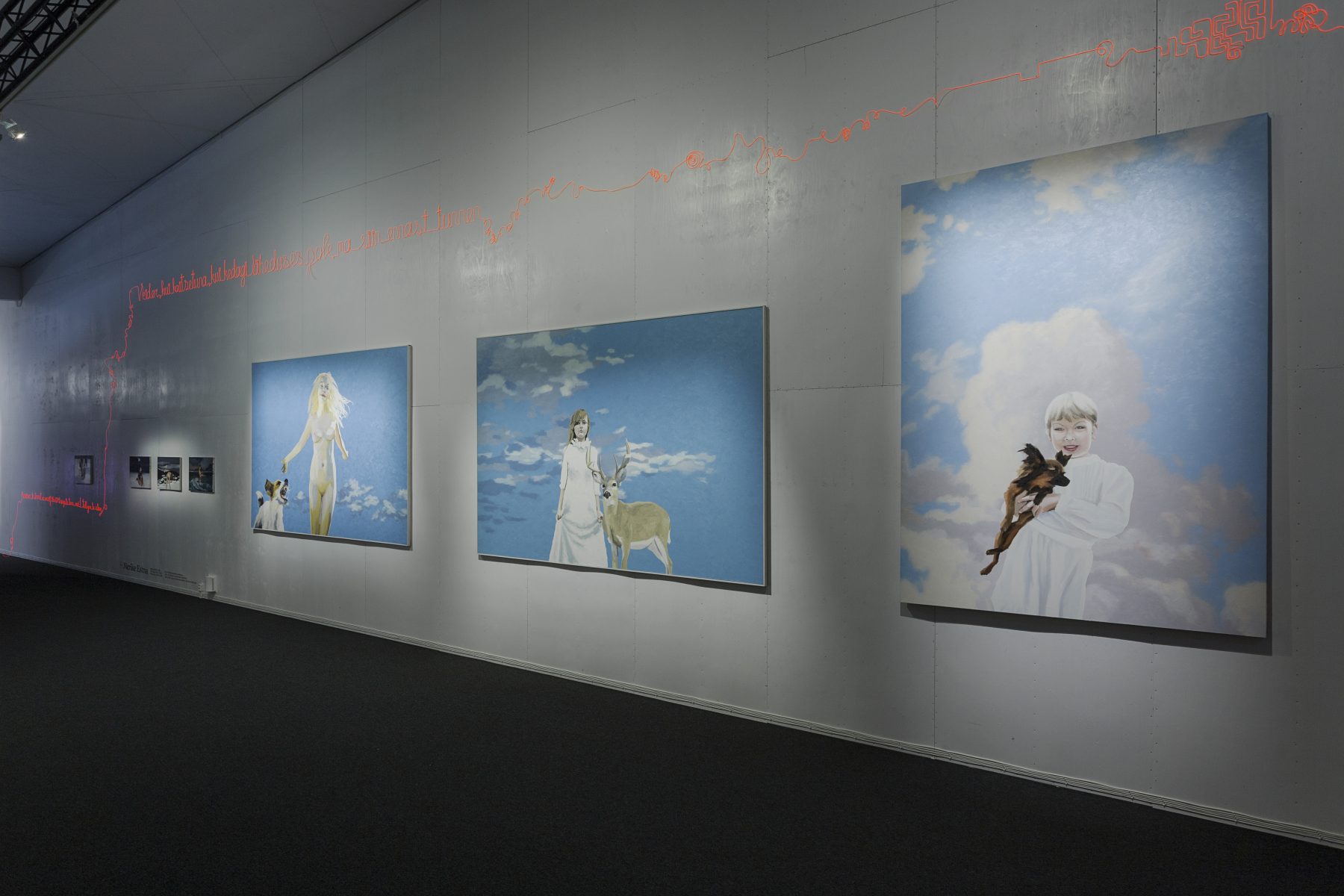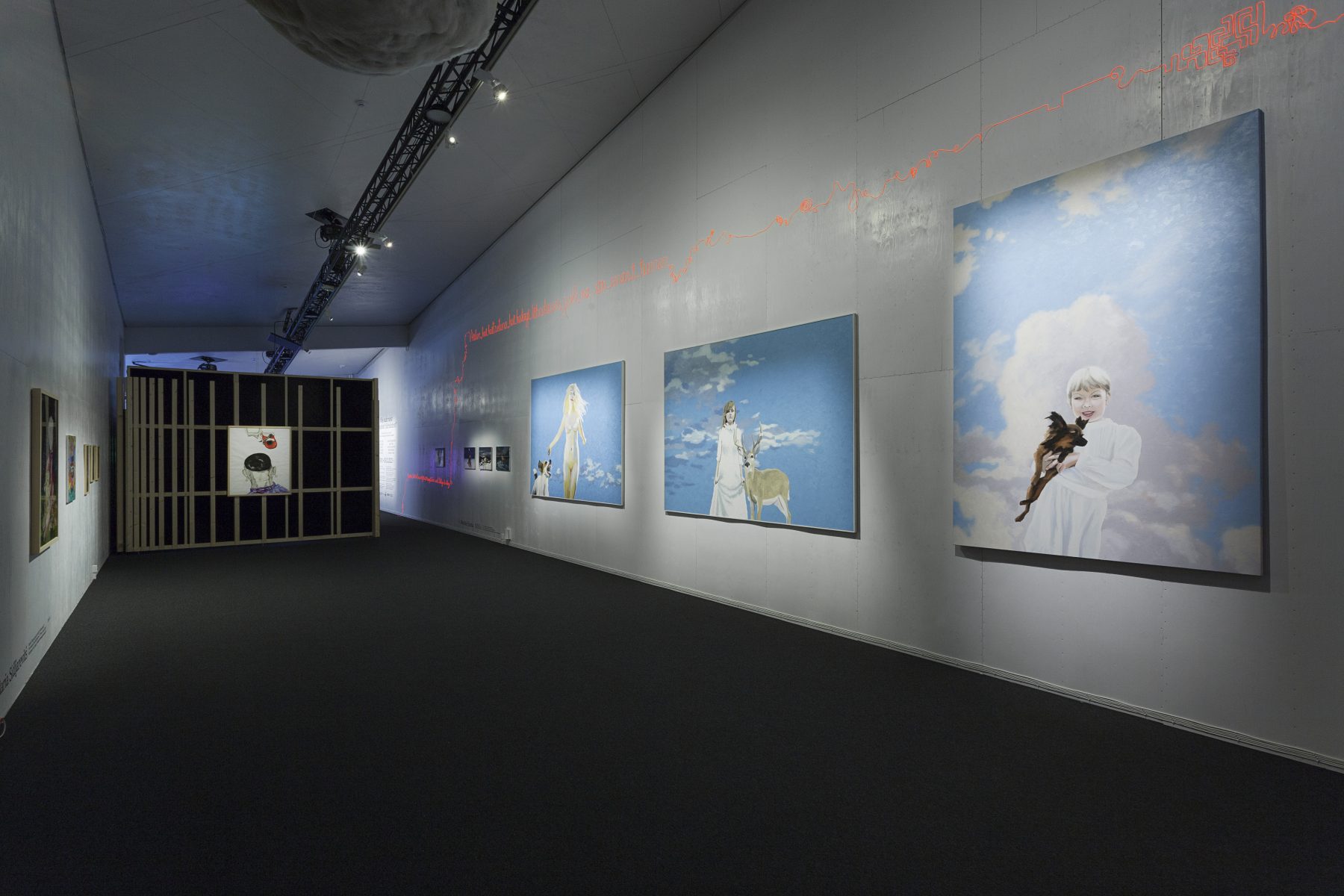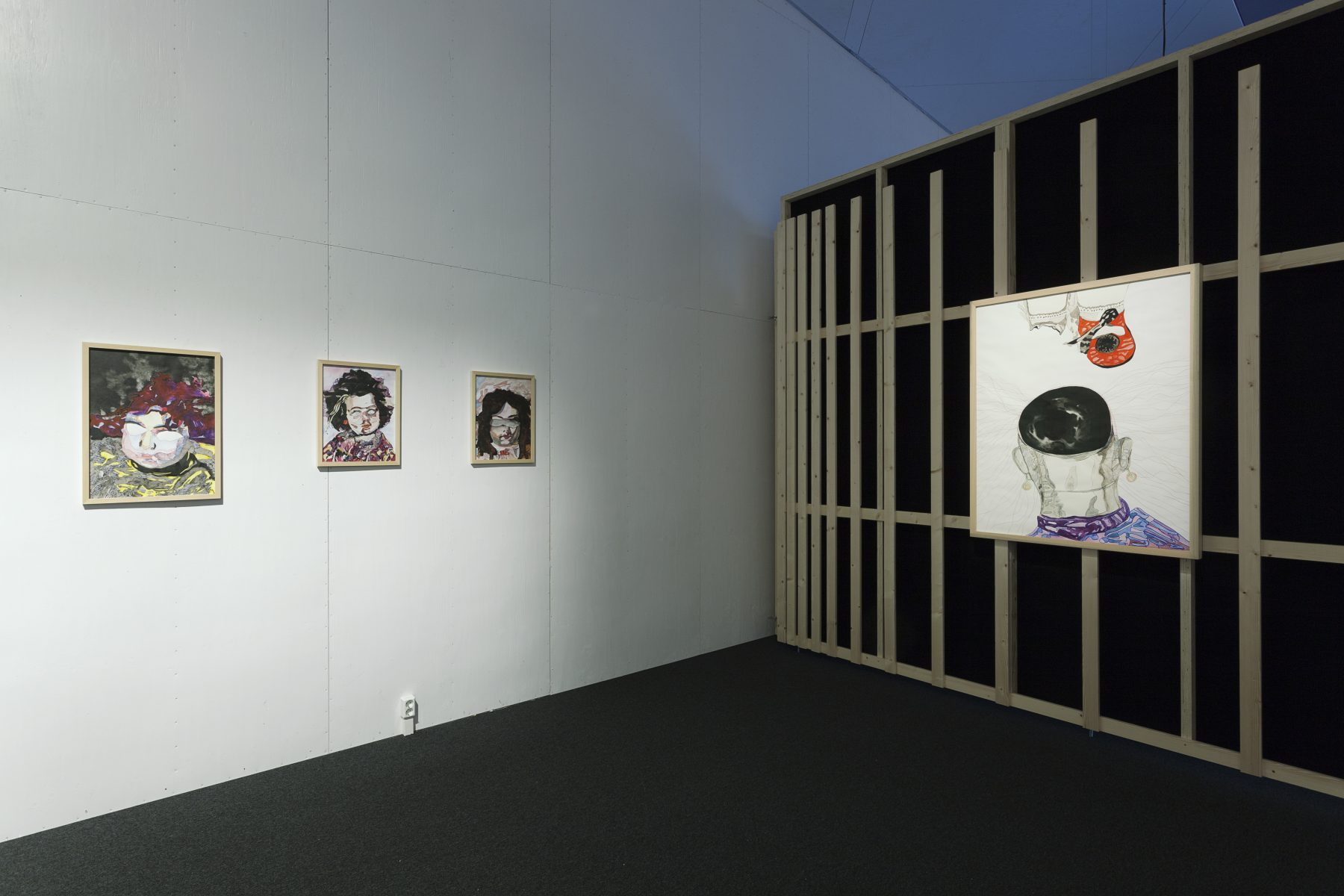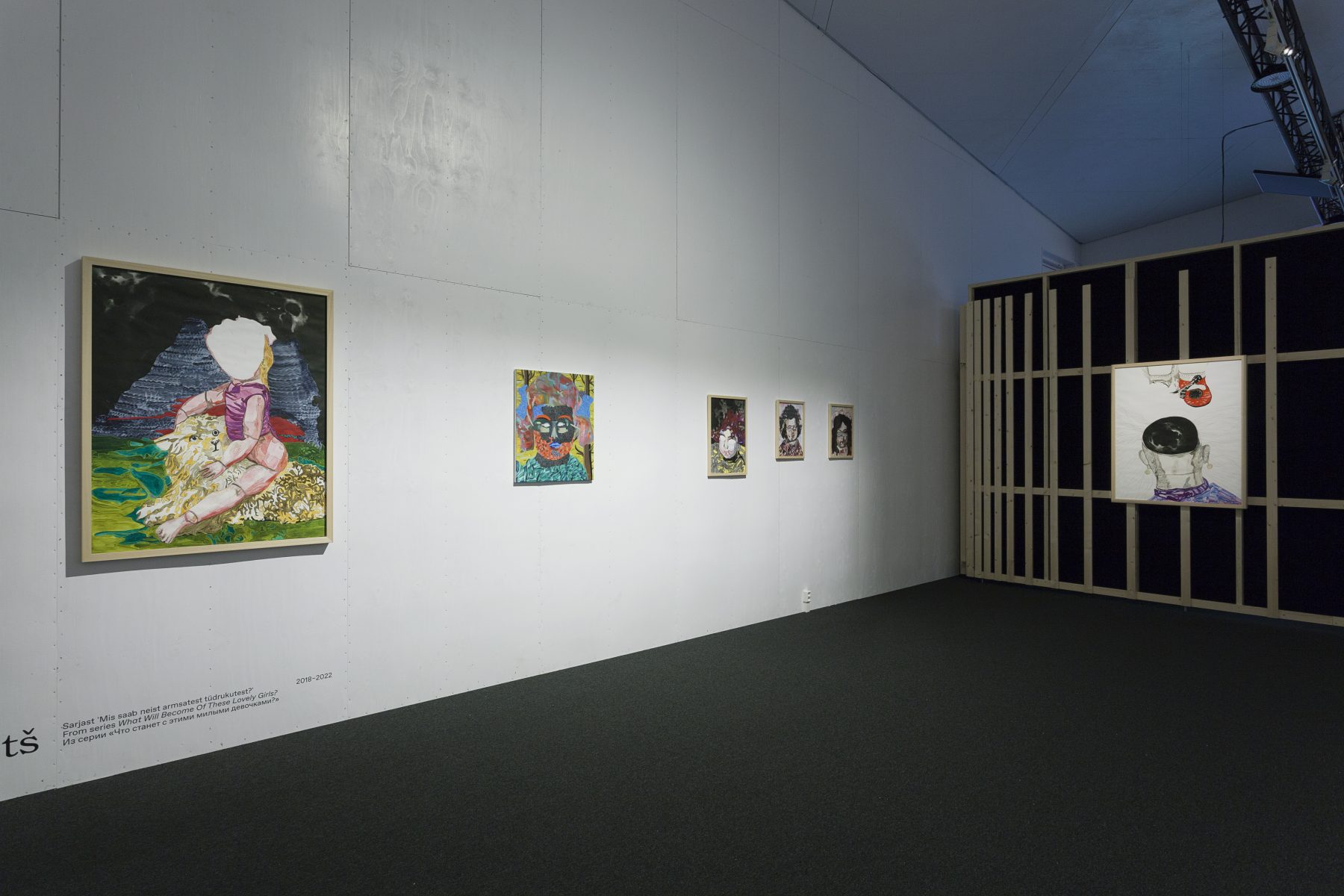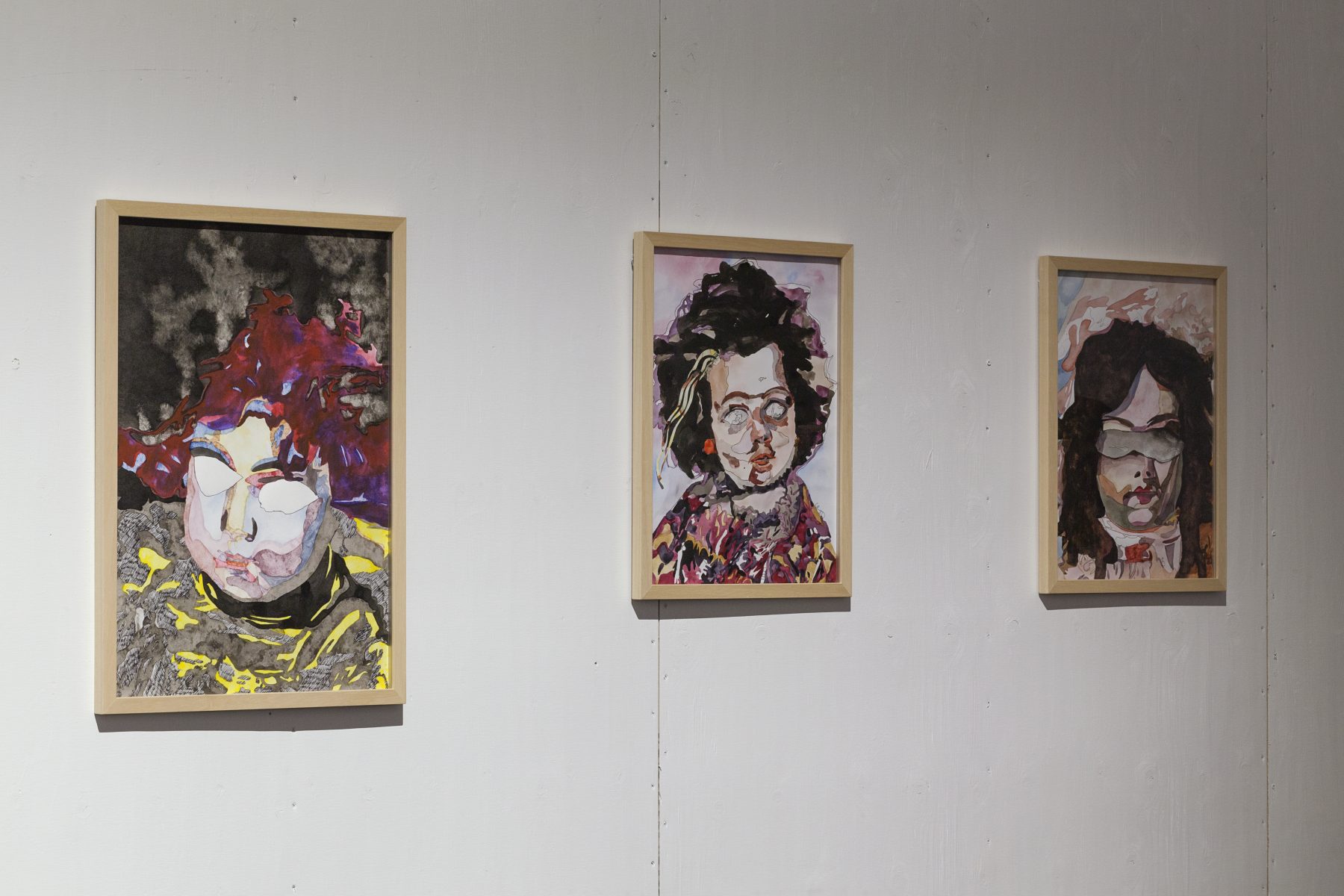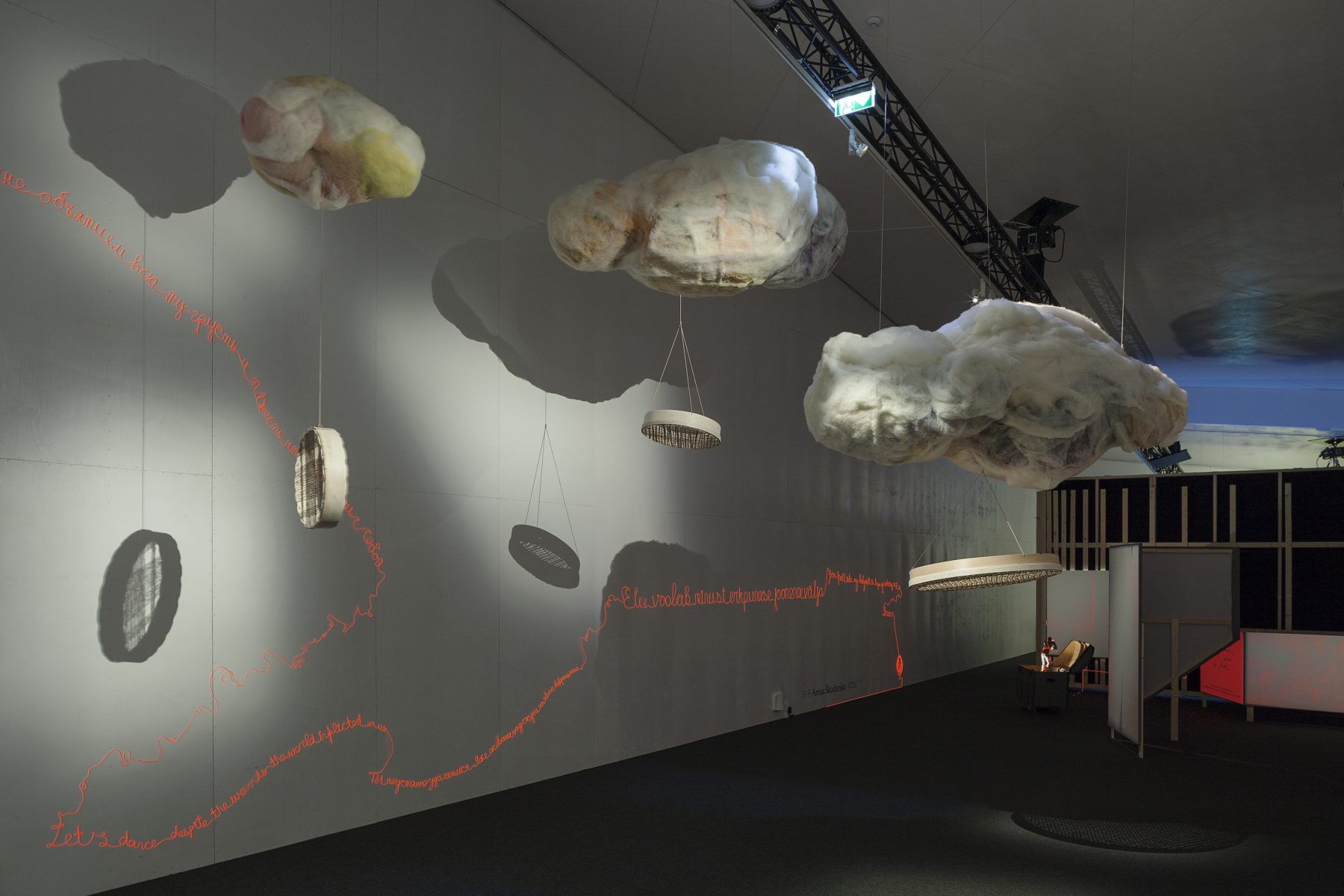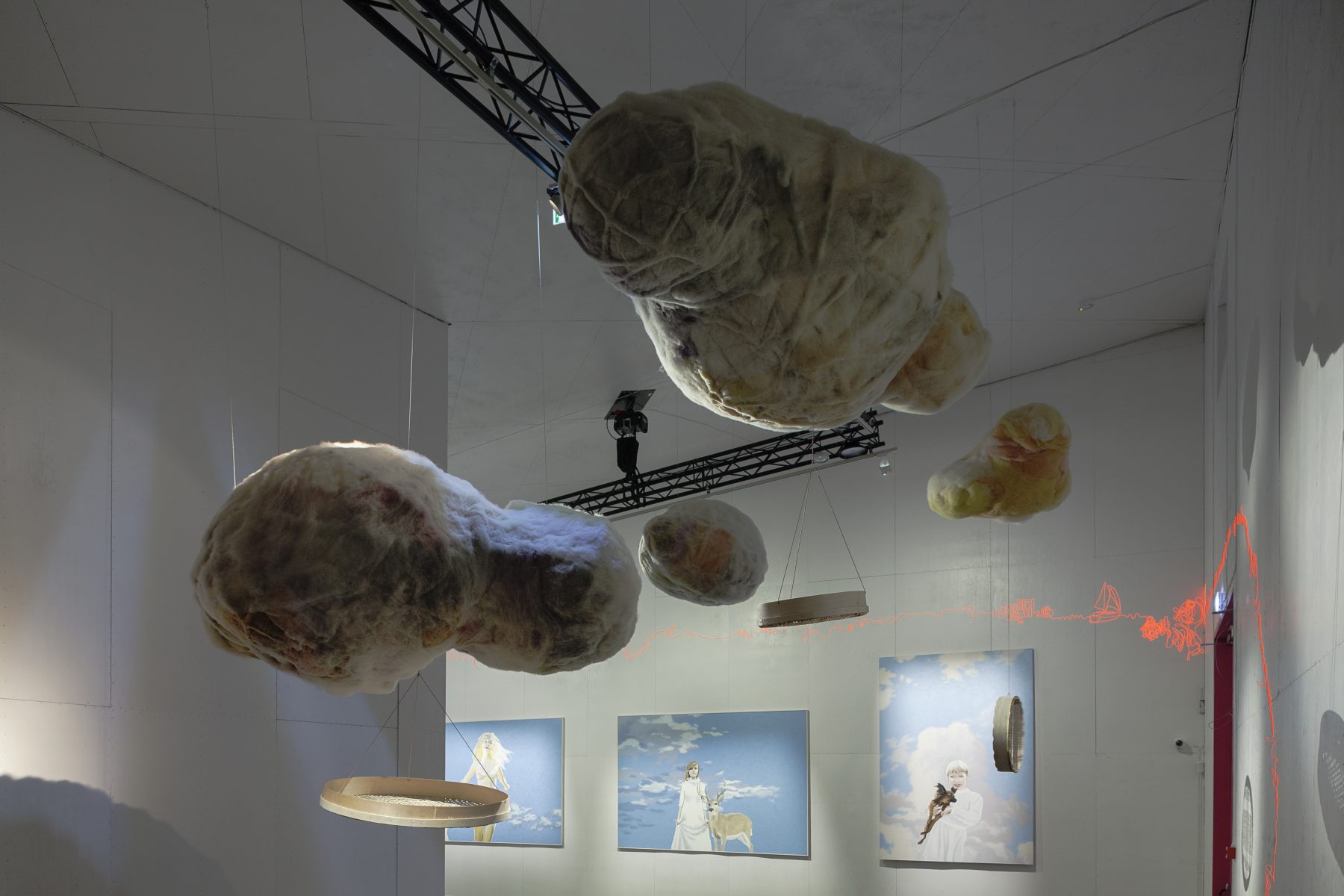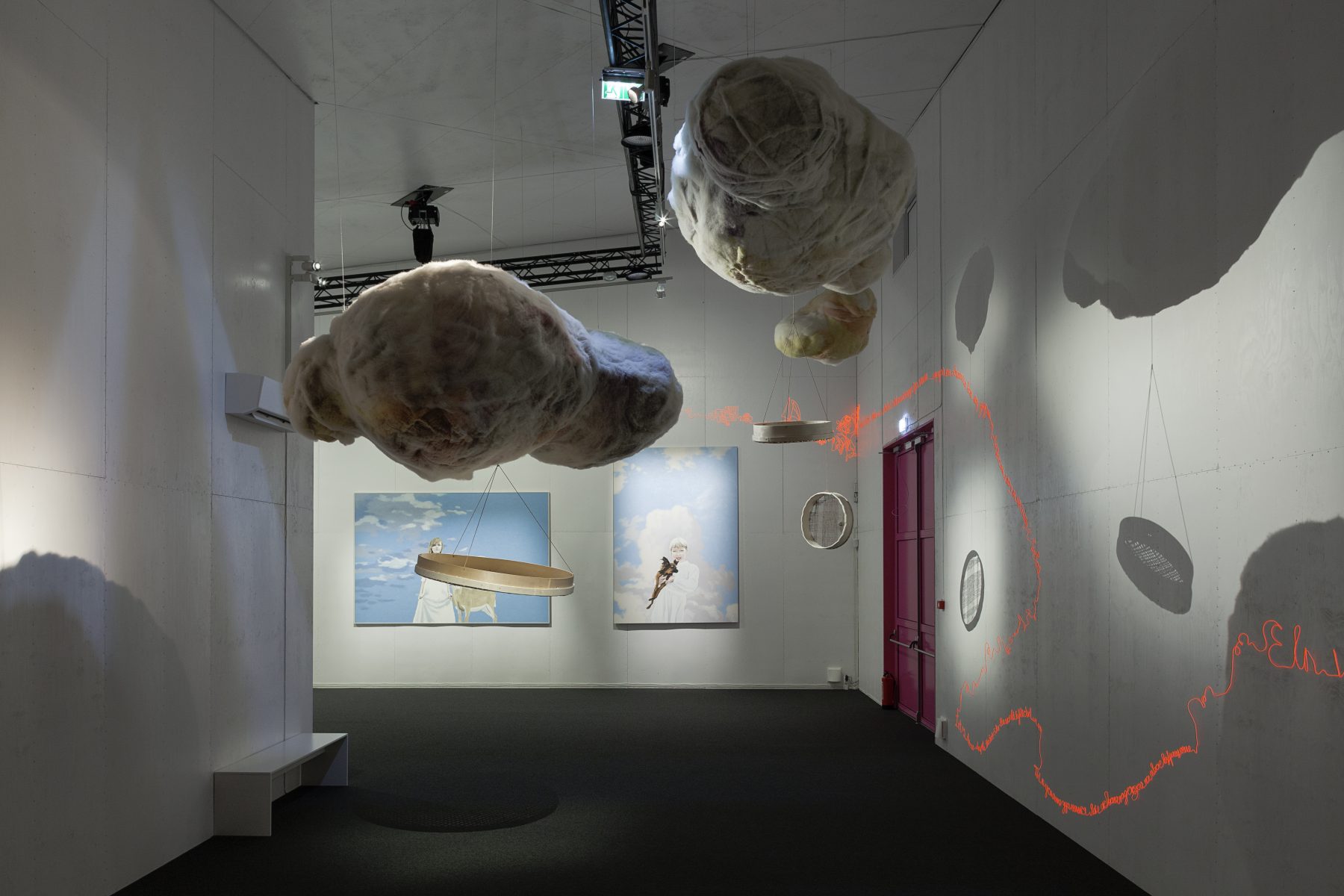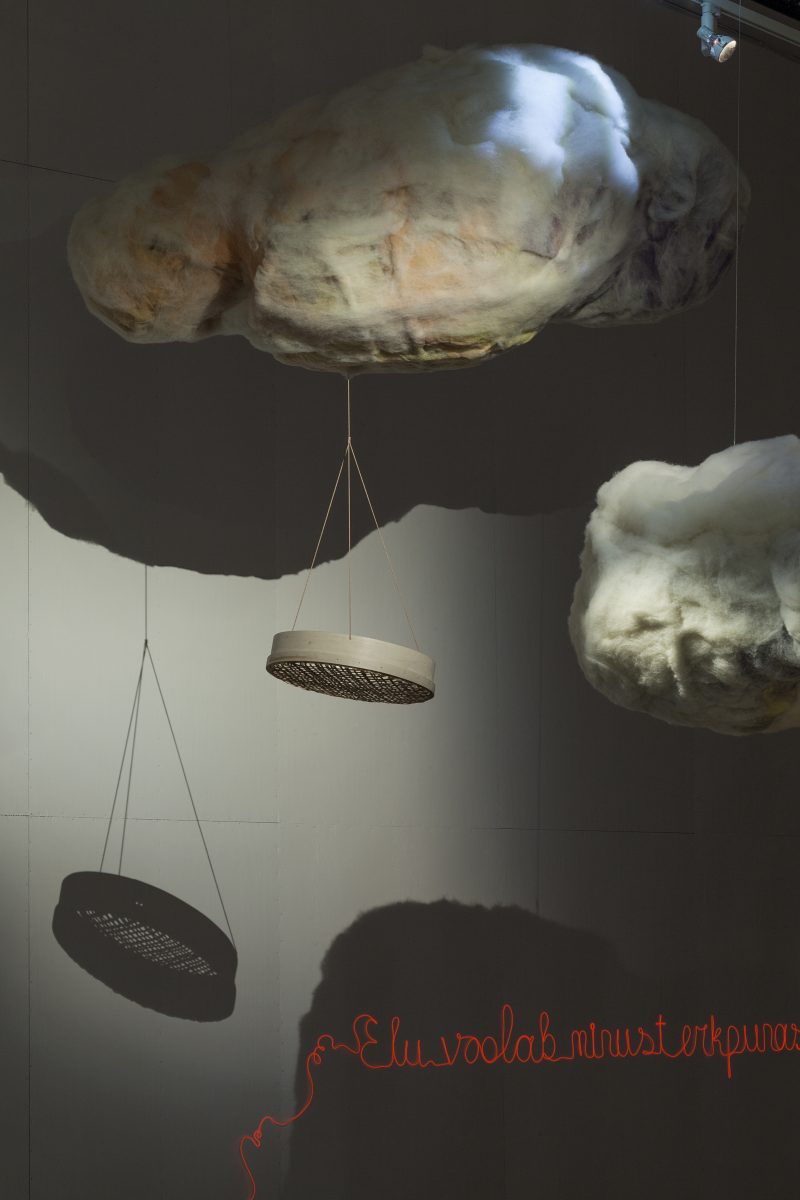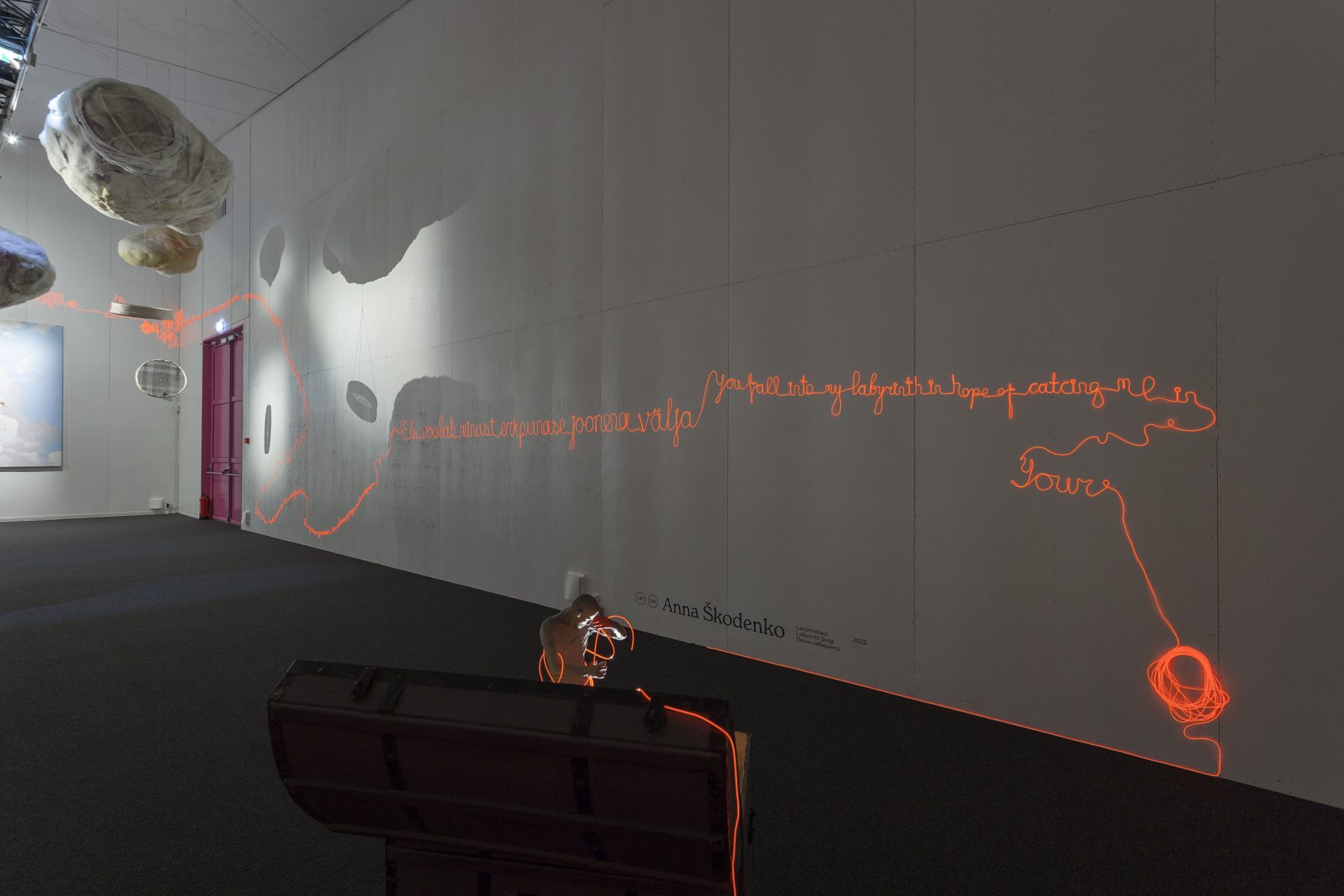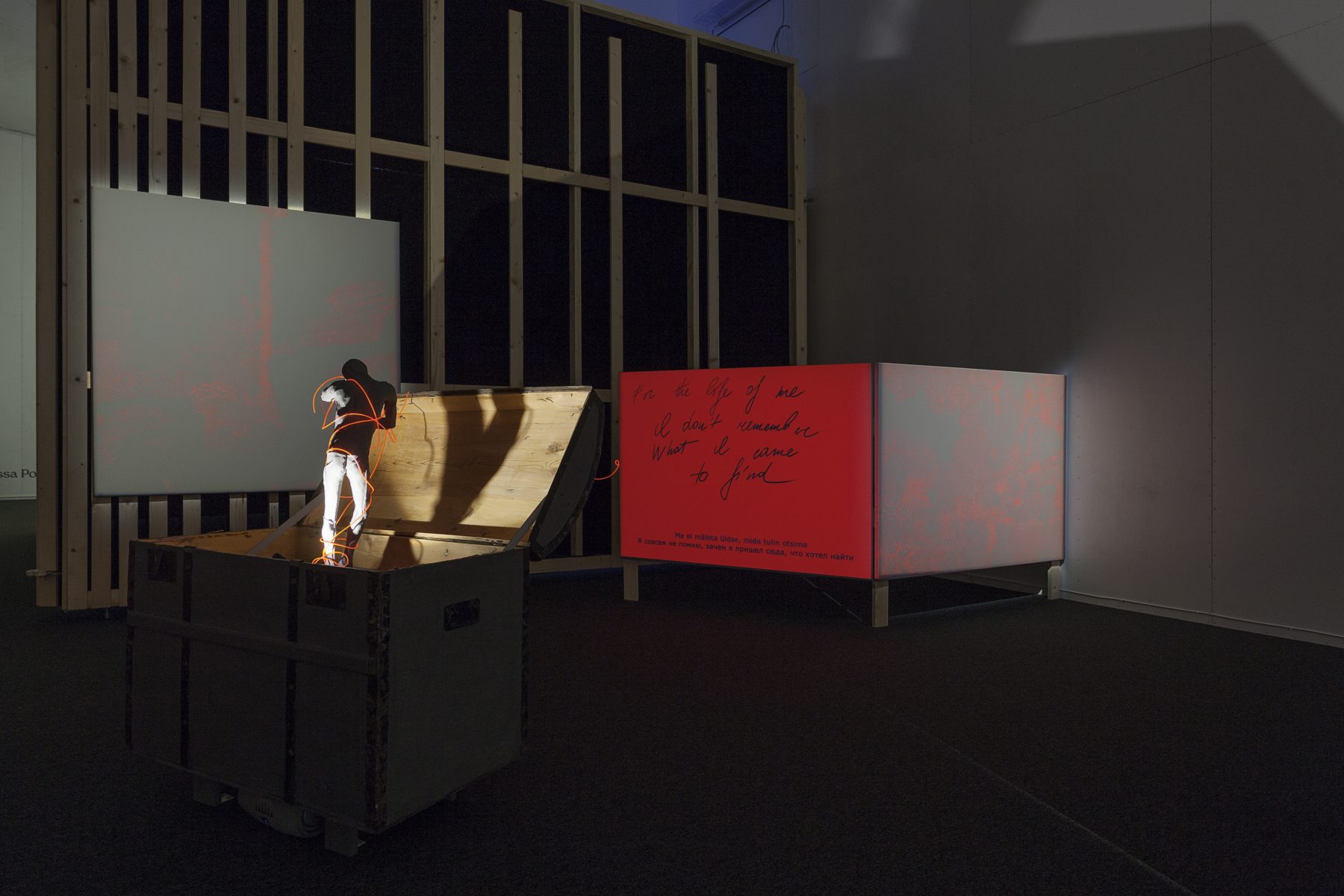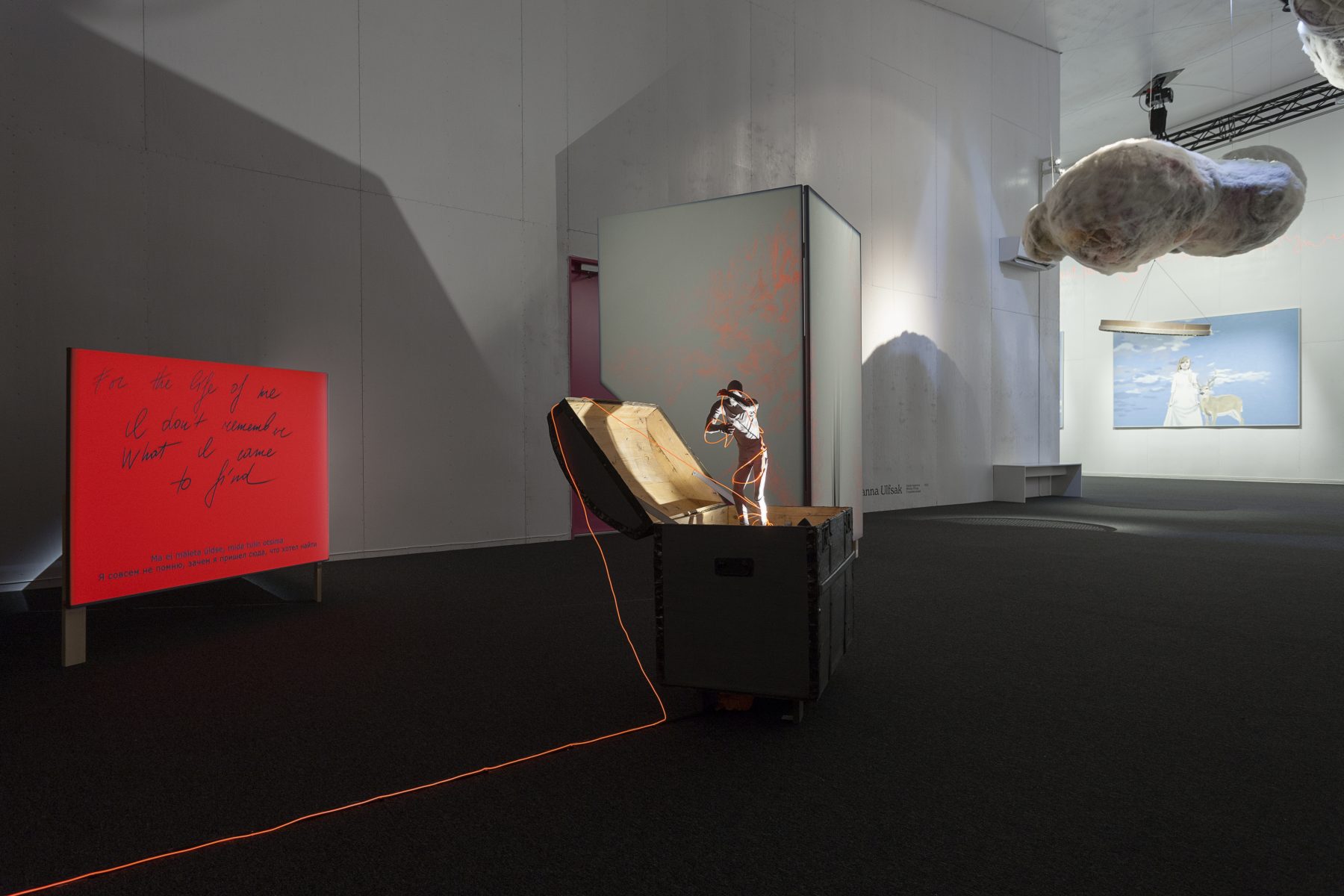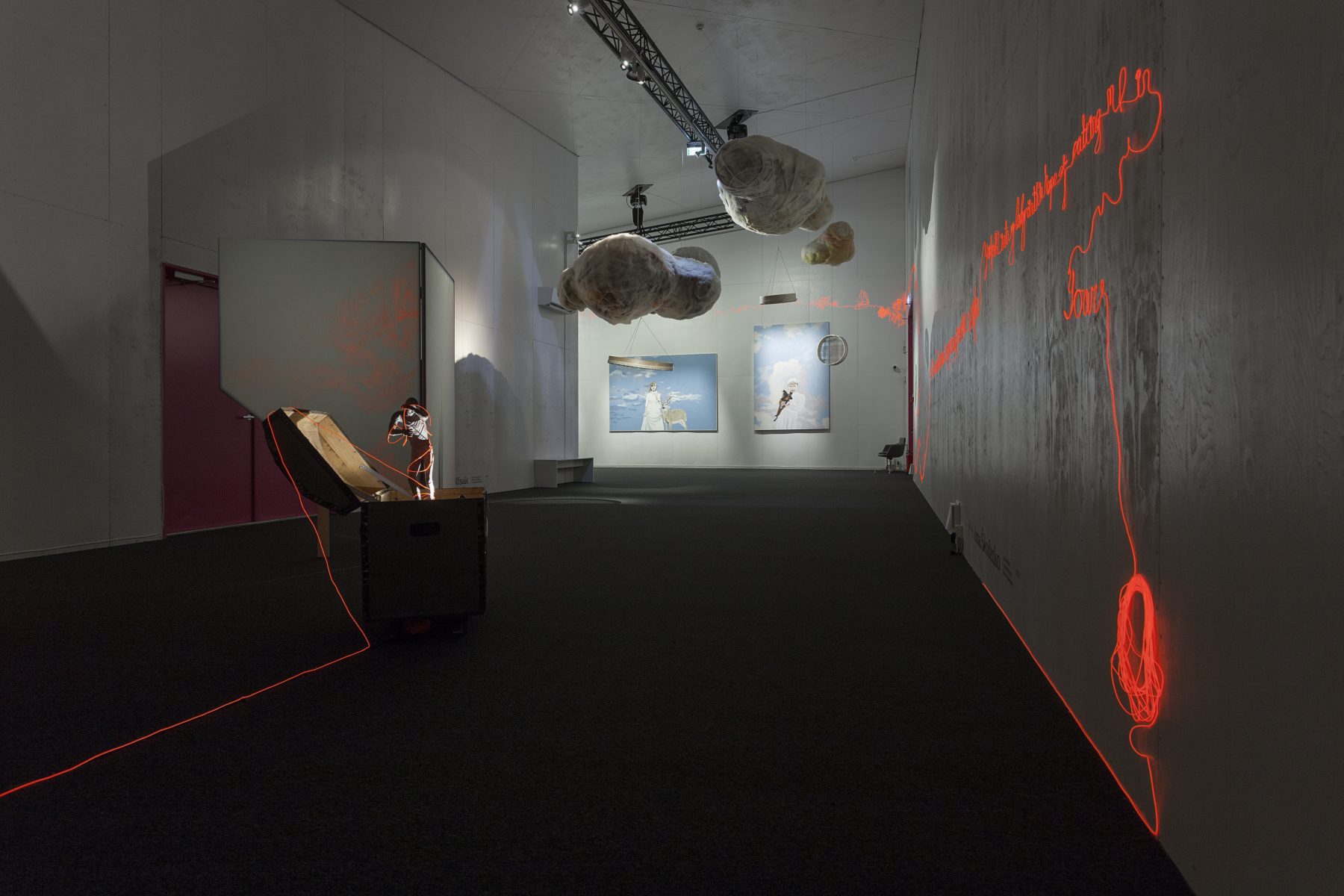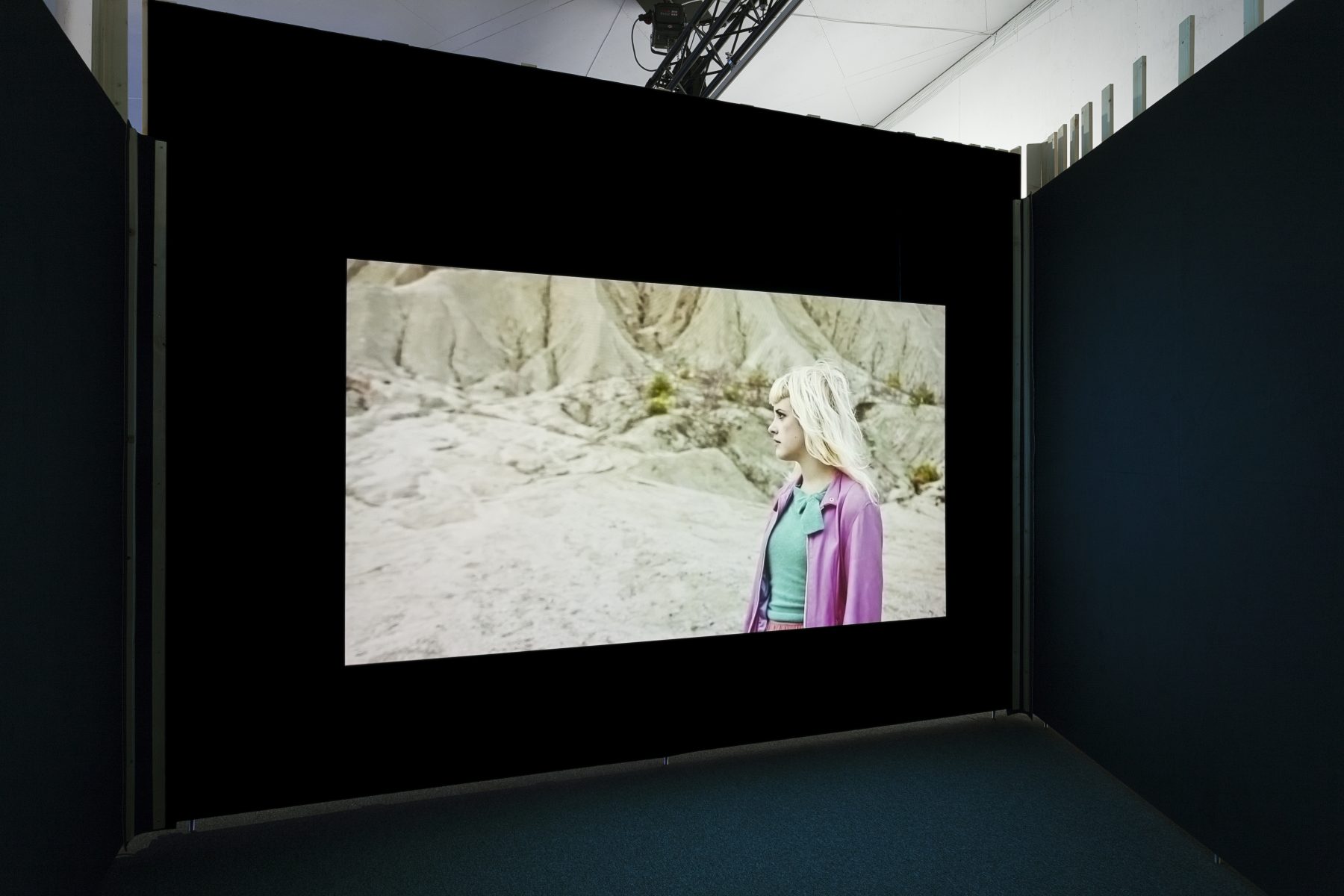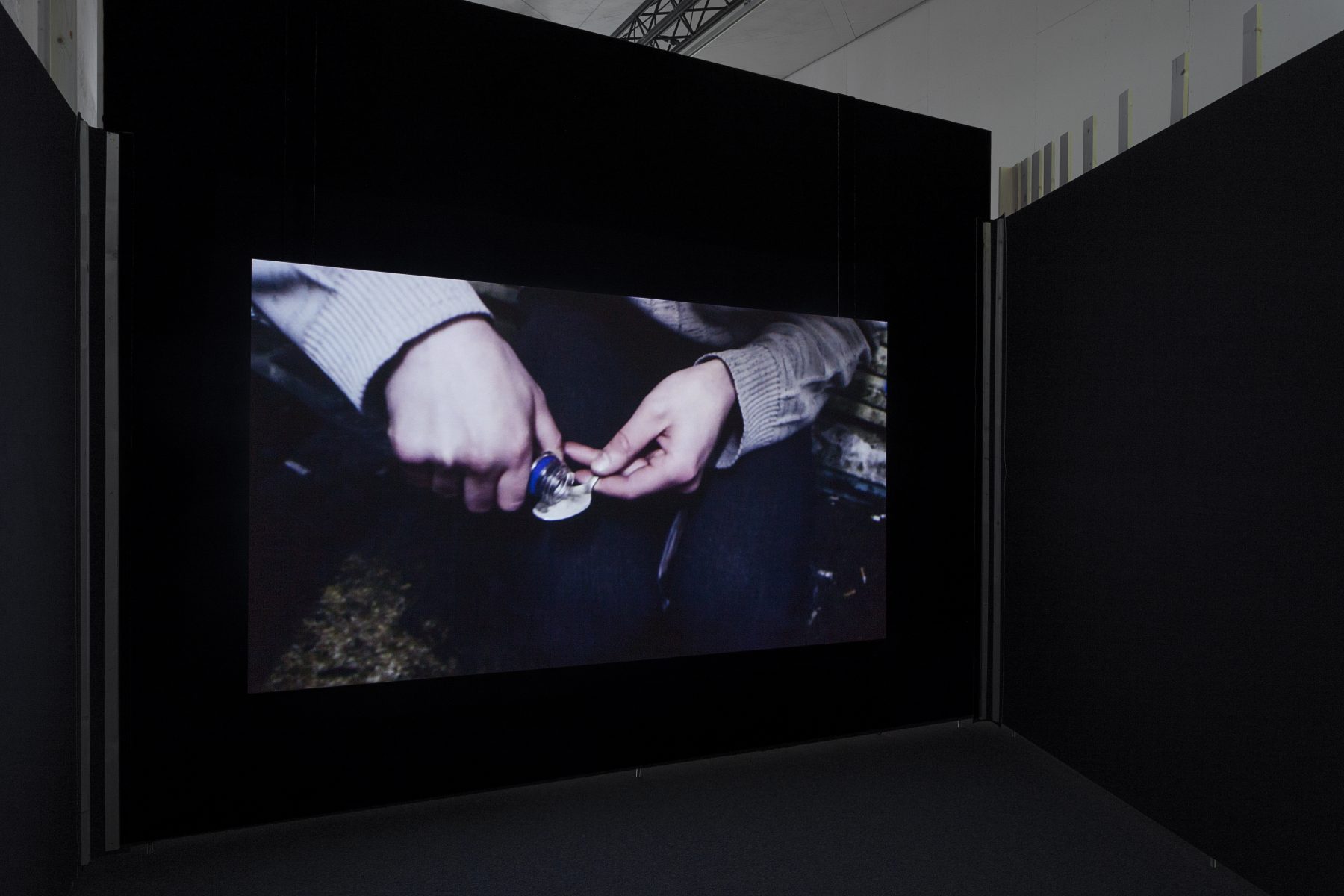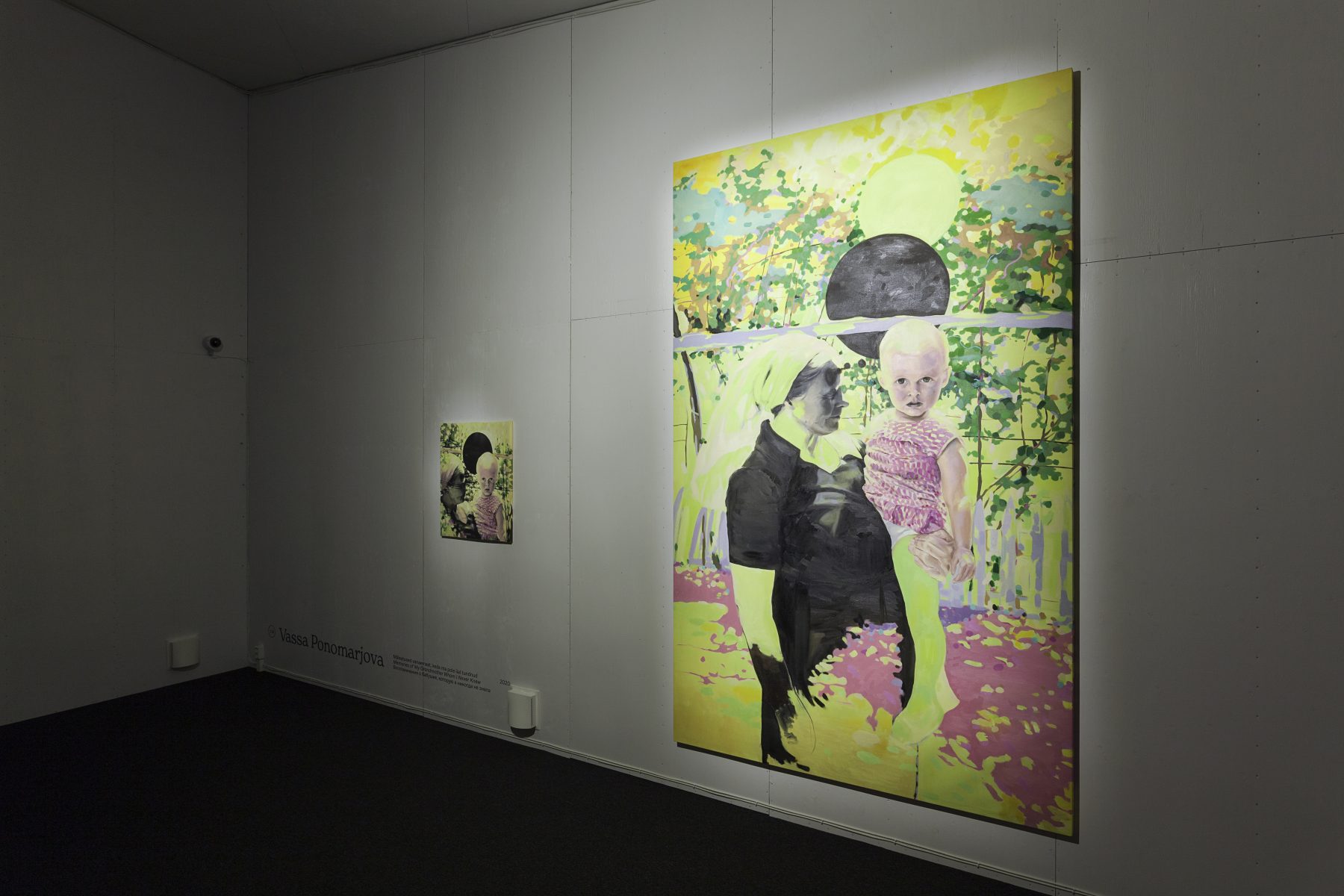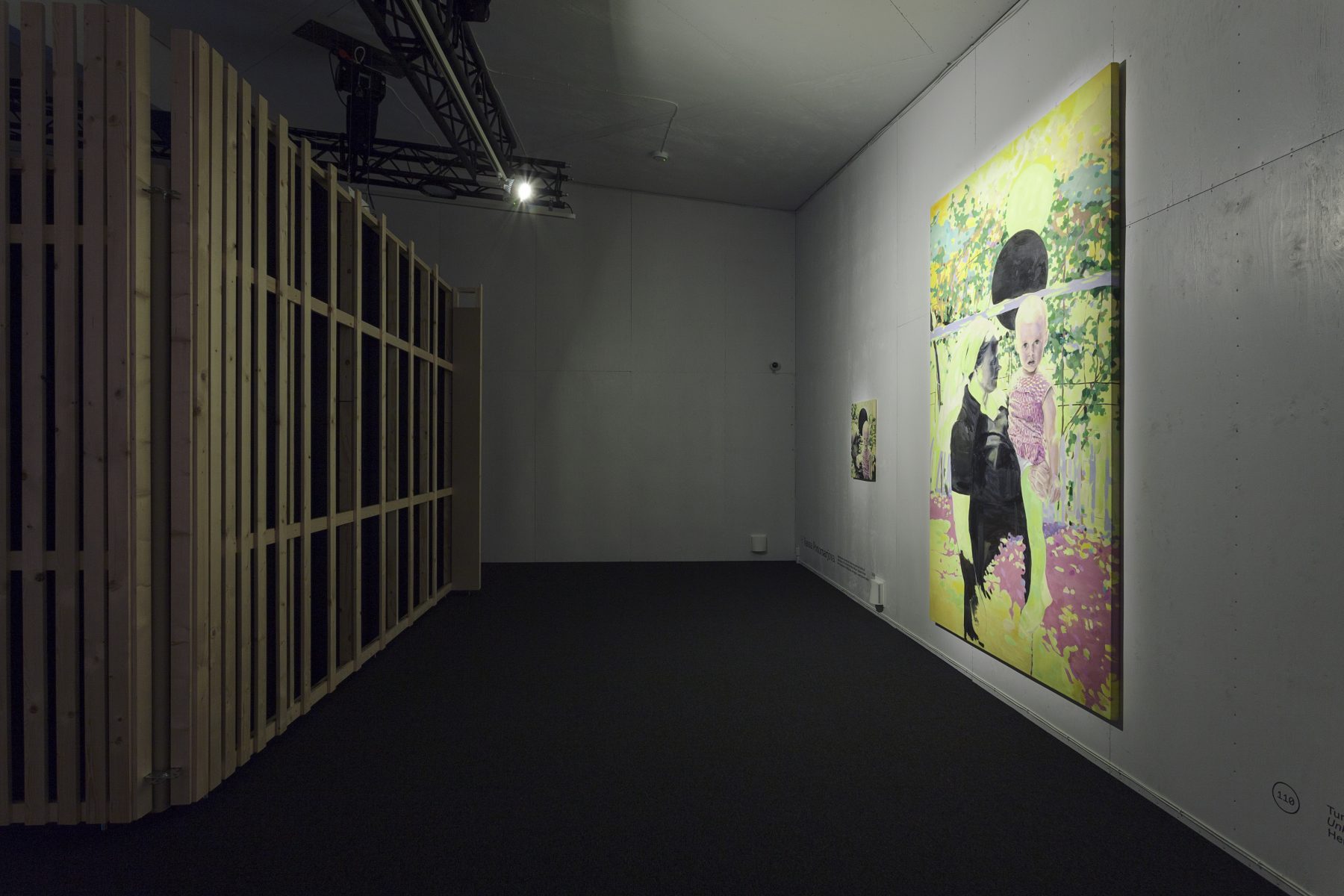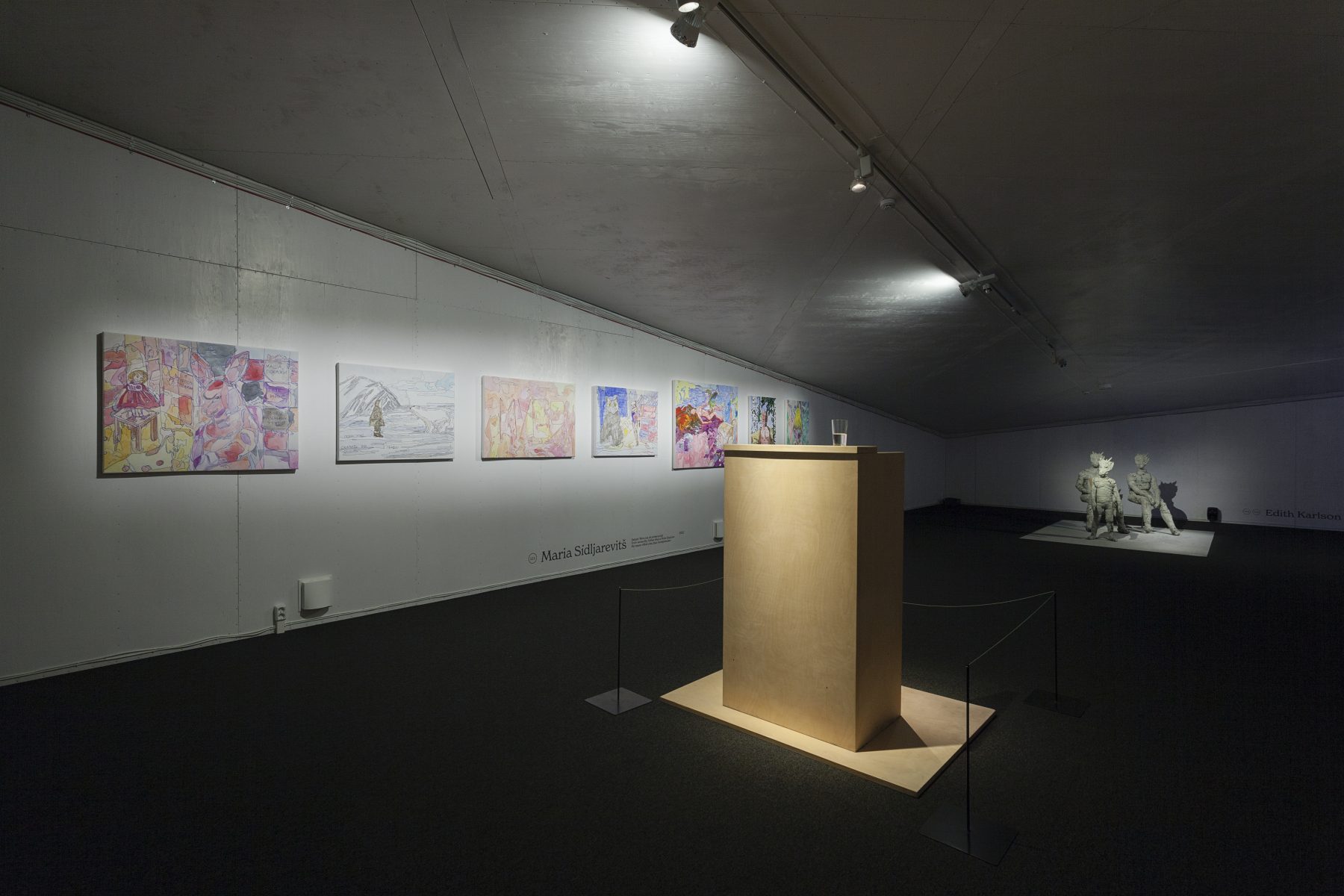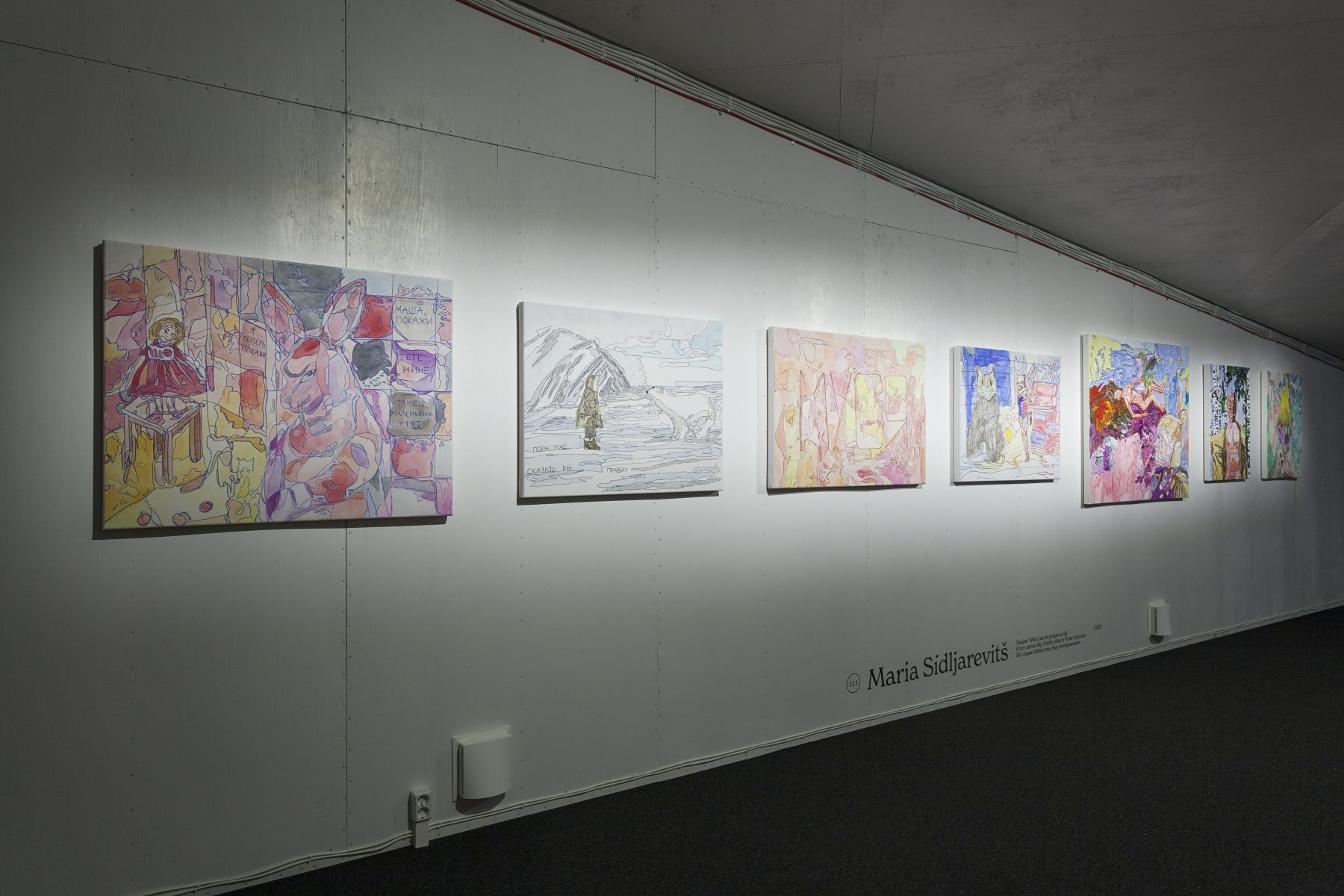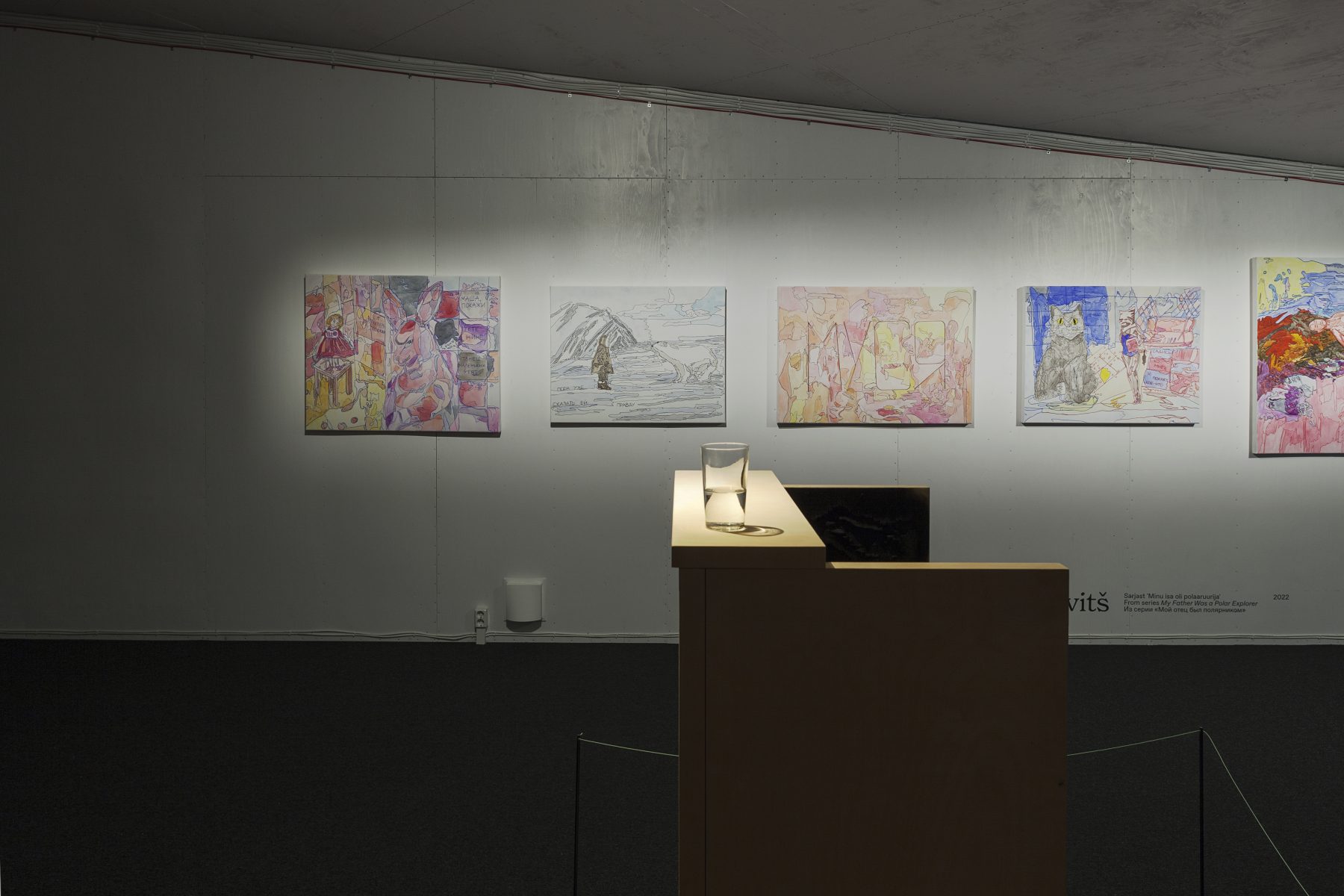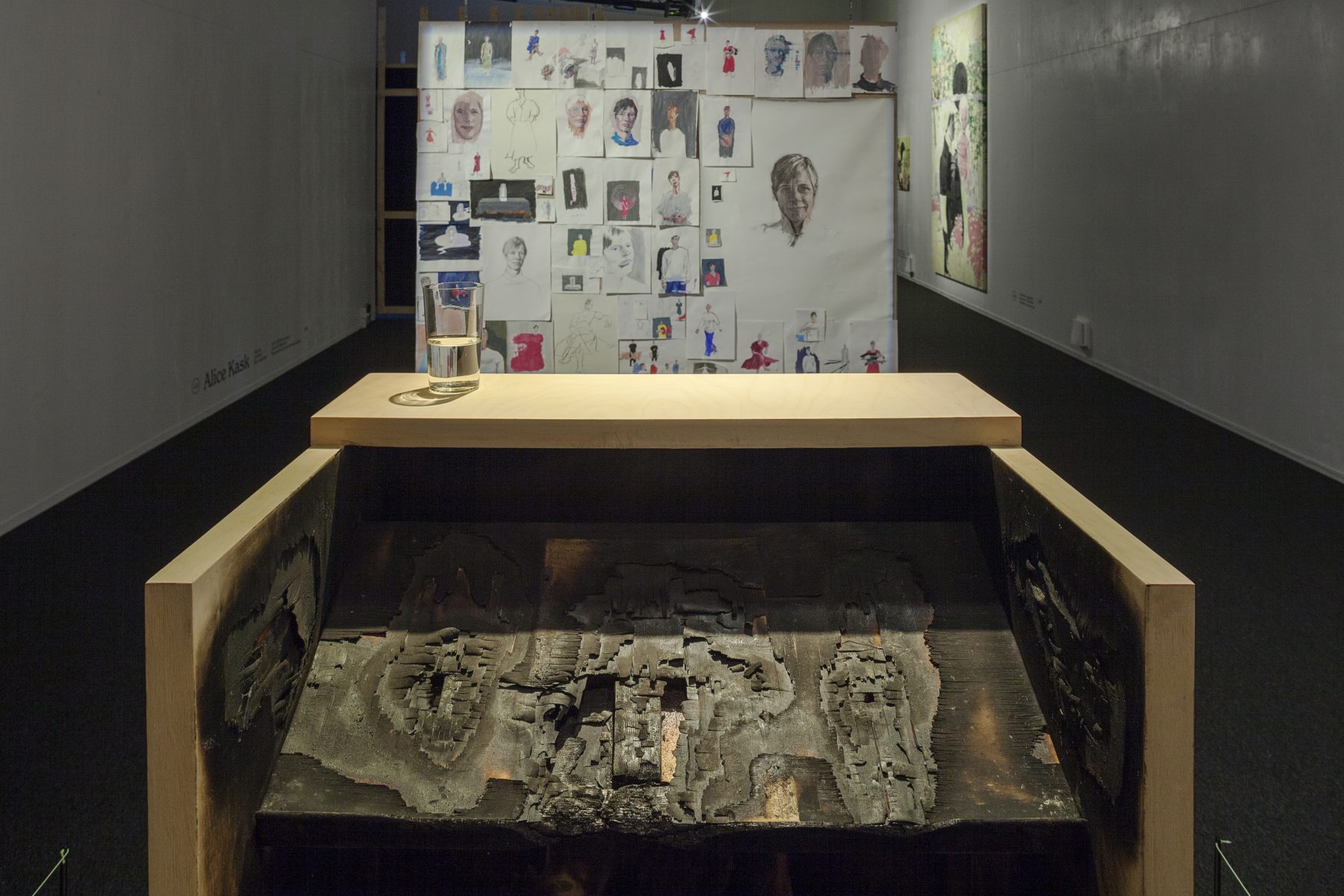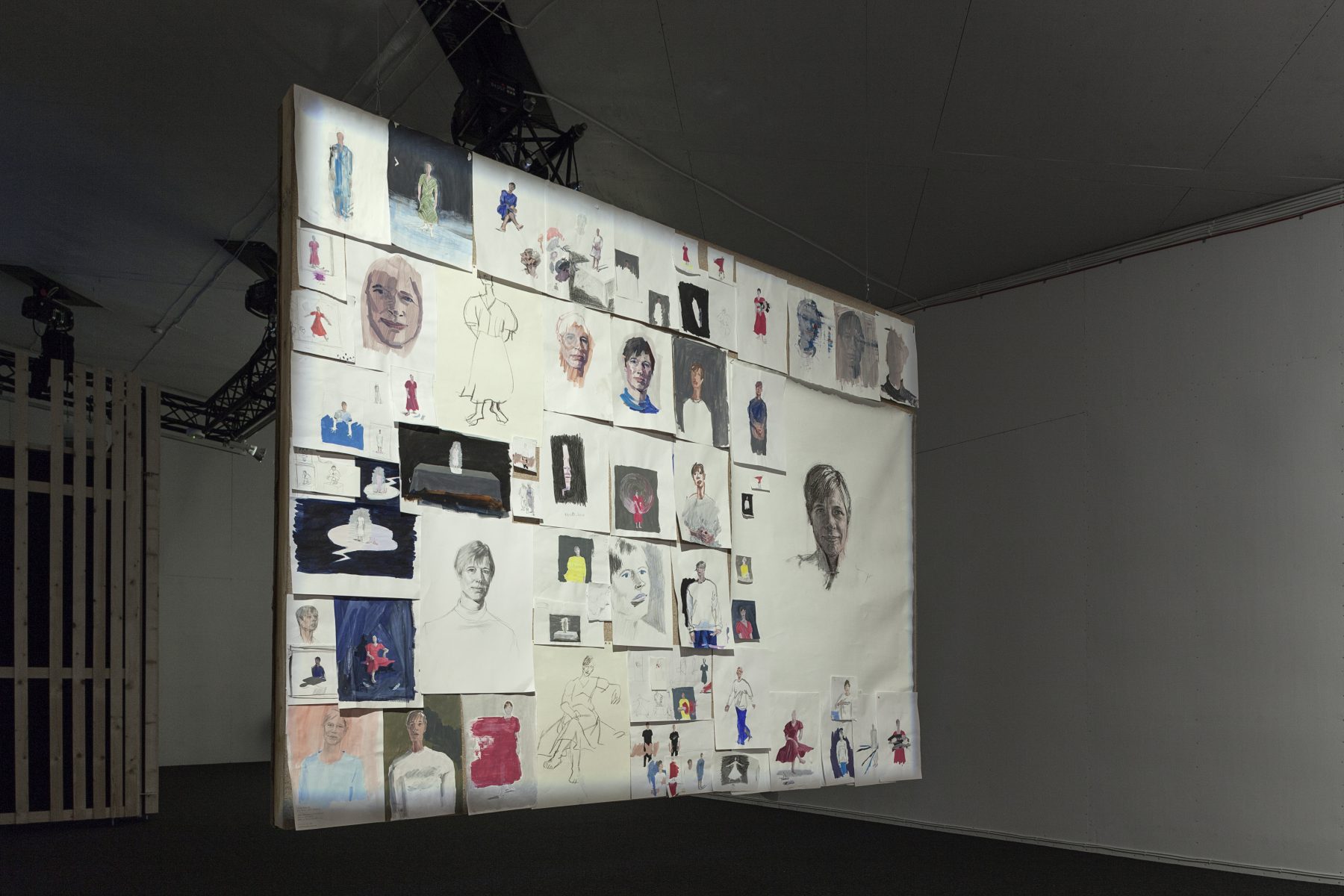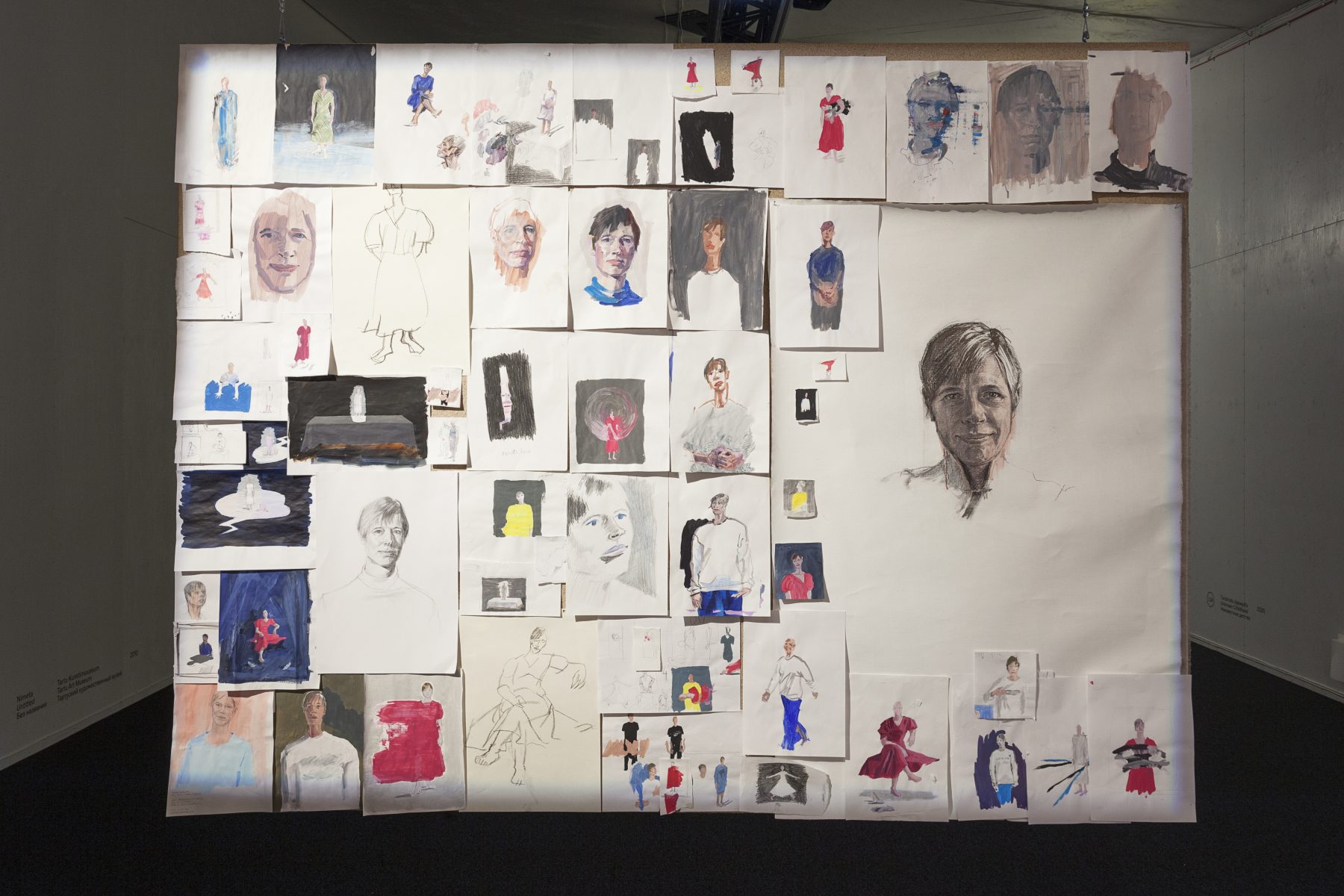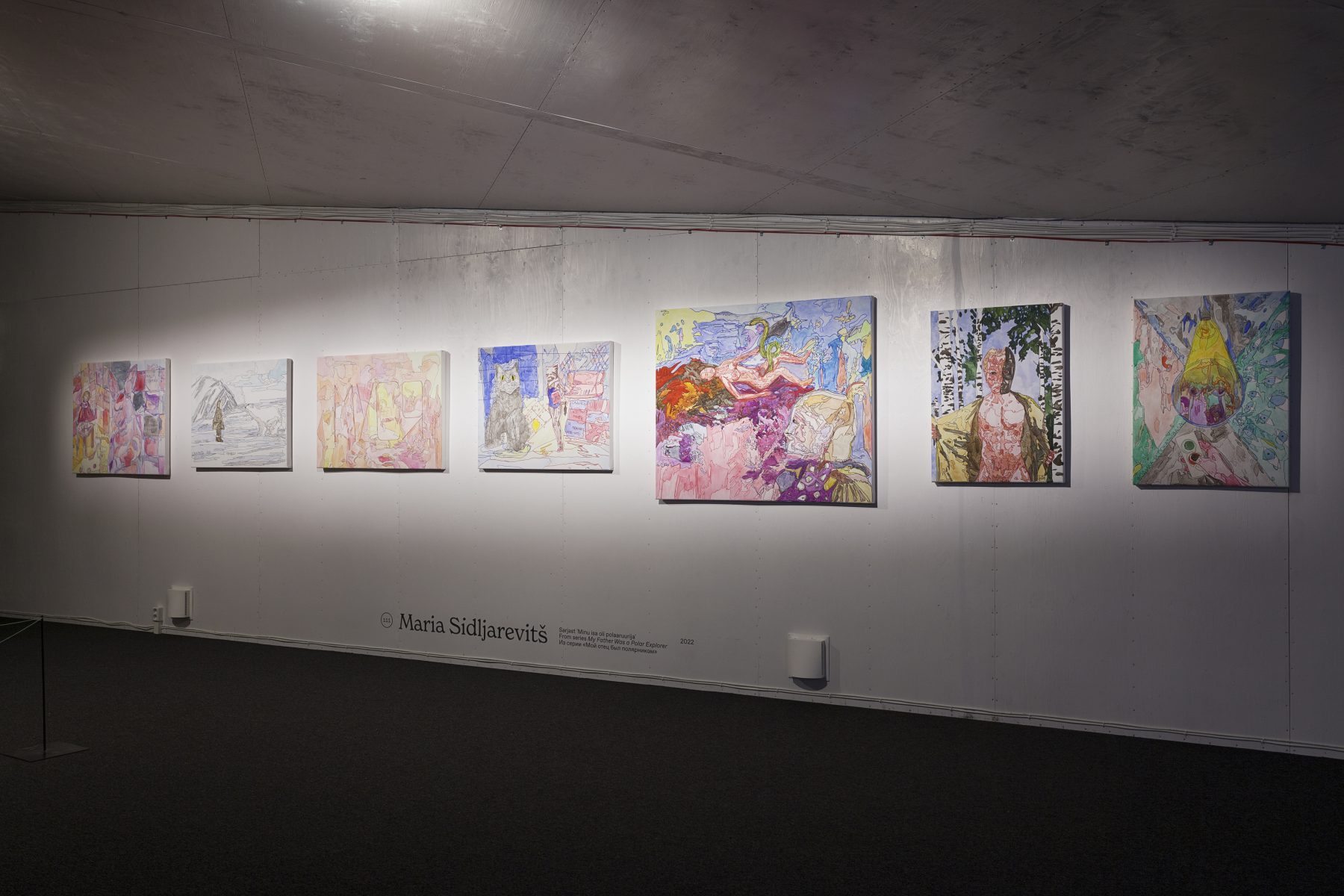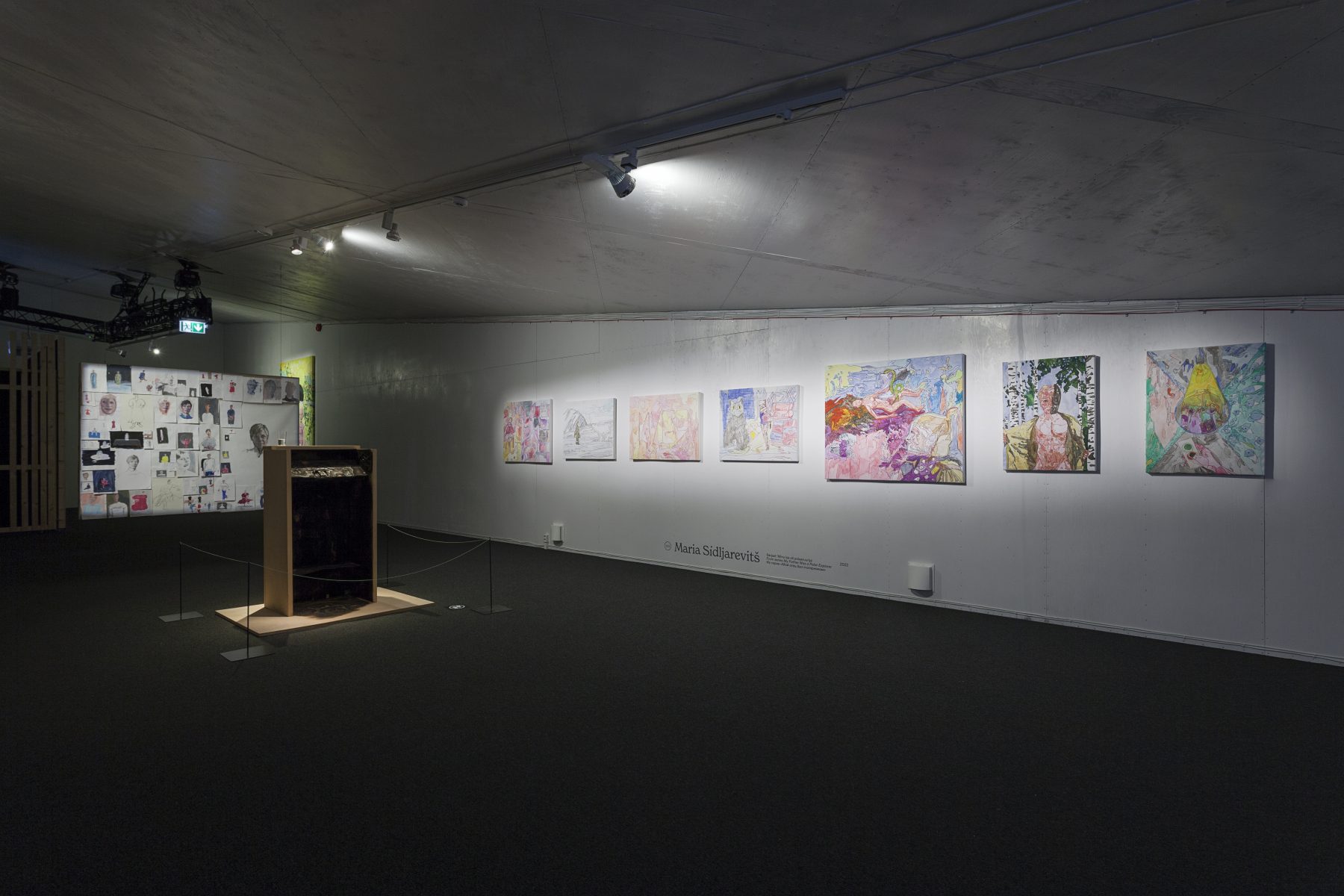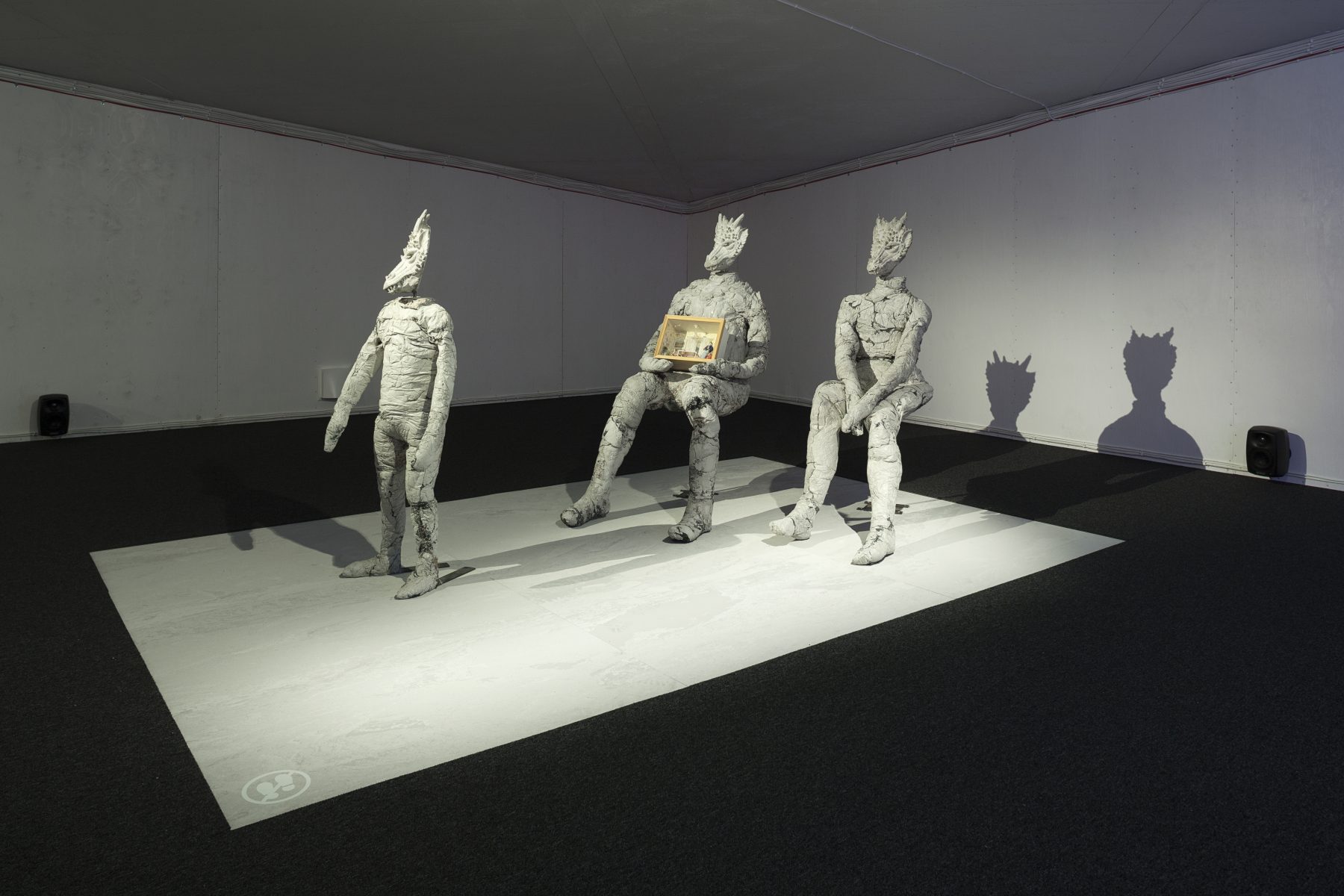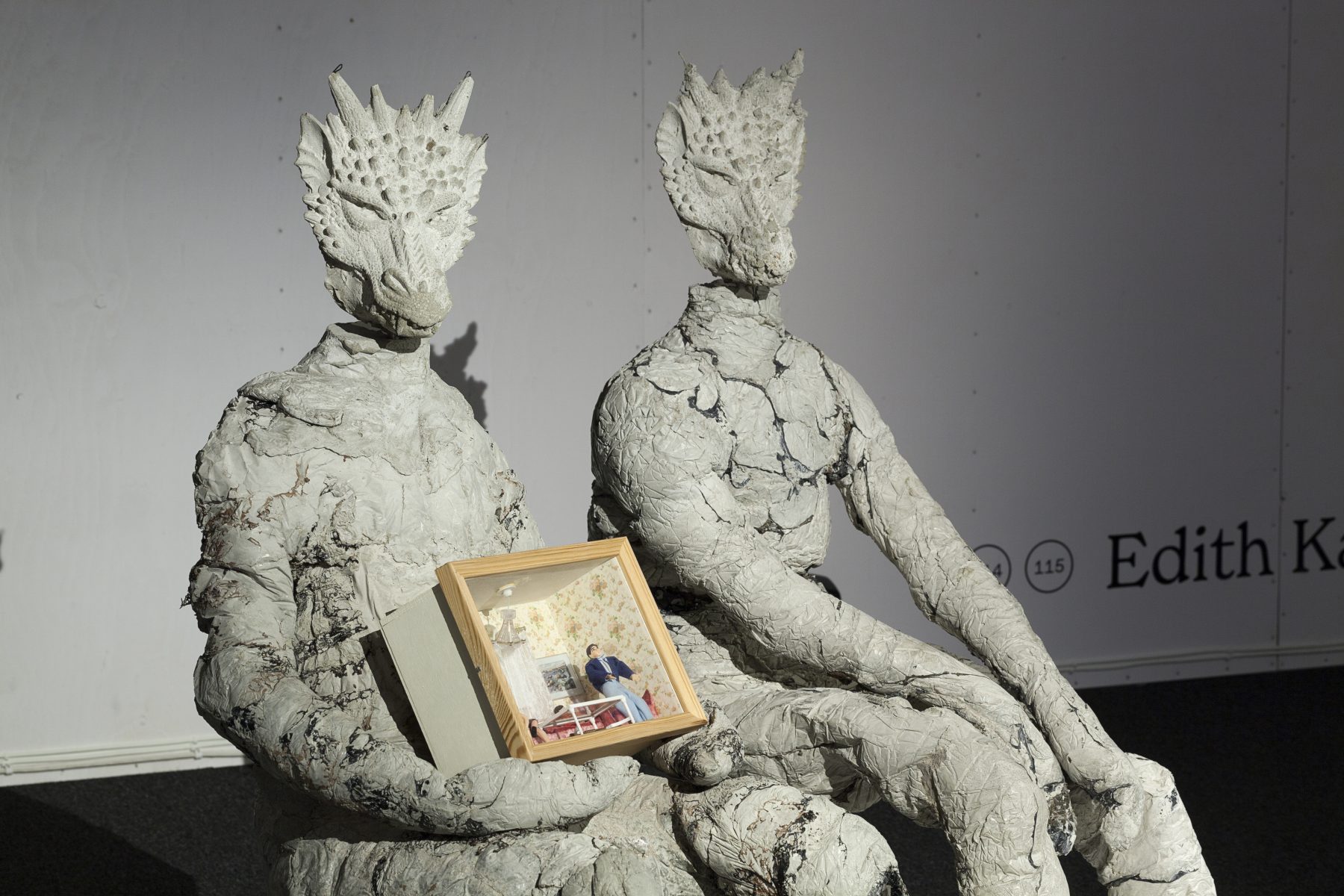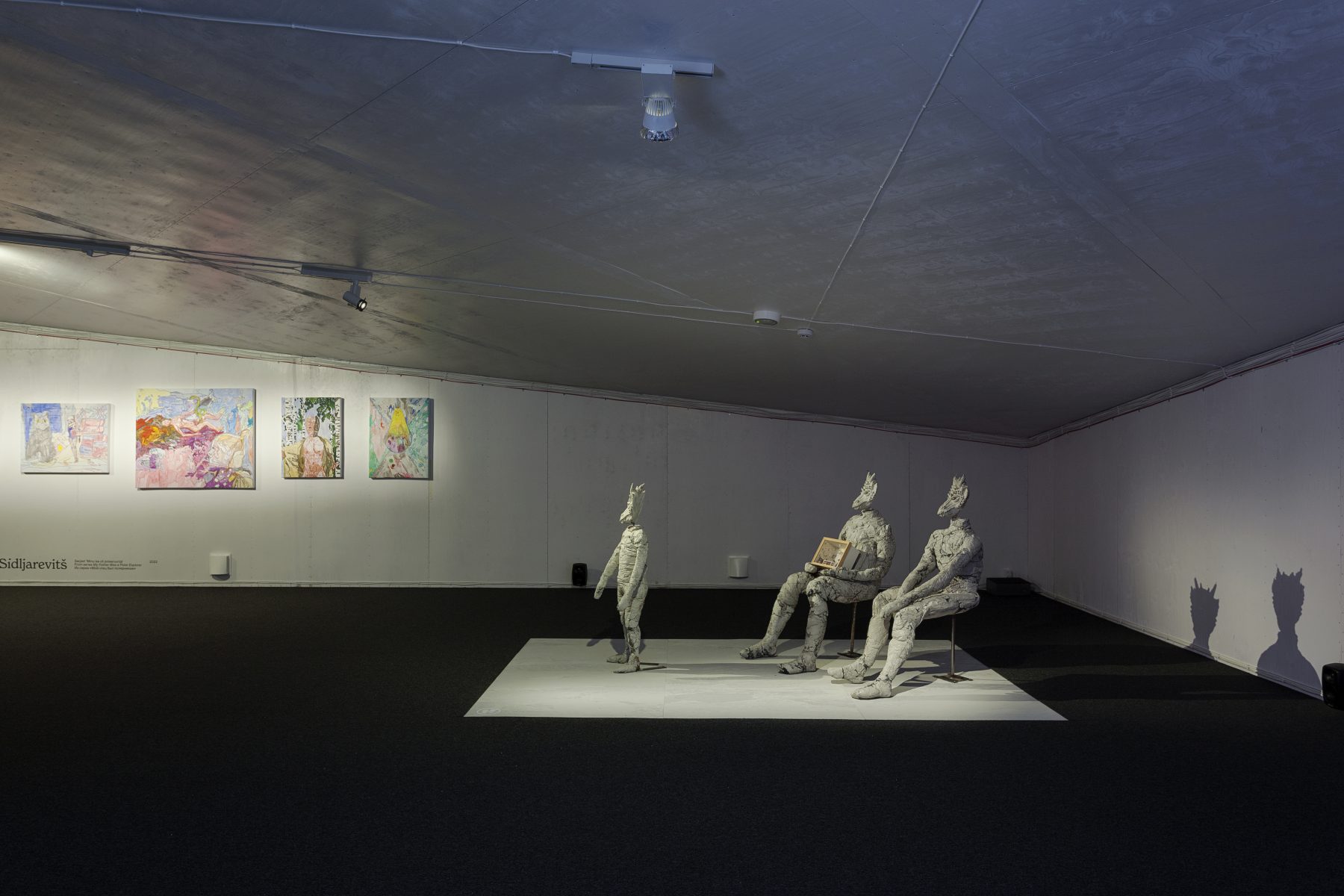Is There Hope for Lovely Creatures?
Curator Tamara Luuk
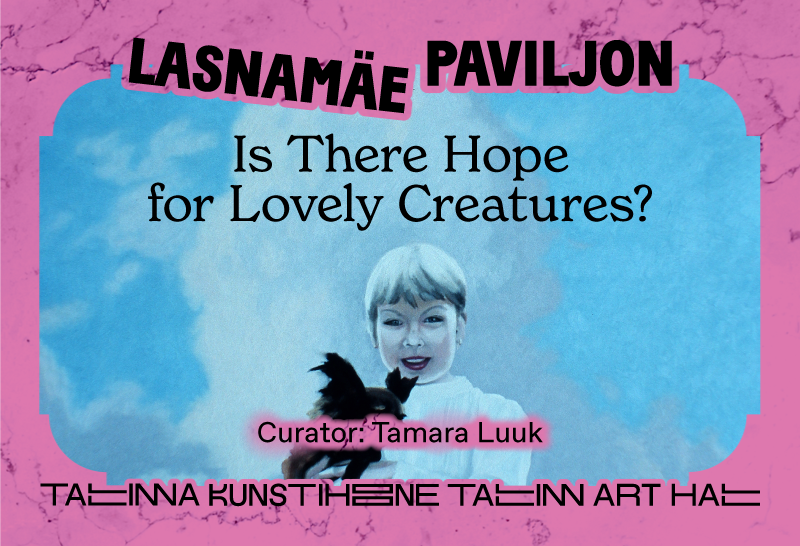
“Is There Hope For Lovely Creatures?”, asks the opening exhibition of Tallinn Art Hall’s Lasnamäe Pavilion, which focuses on the inner world of women, the most fragile yet bravest members of society.
The main starting point for the exhibition is the honest and personal reactions of Estonian- and Russian-speaking artists to trust and climate crises, wars and pandemics, the imbalance in traditional family relationships and what the tensions caused by them have transformed into in our innermost feelings. Maintaining balance on such a fluctuating terrain, a woman and her sensitive skin leave a particularly strong impression.
“Being the first exhibition at Tallinn Art Hall’s Lasnamäe Pavilion, Is There Hope For Lovely Creatures? seeks to access the distinctiveness of the creative impulses of Russian-speaking artists in Estonia. Speaking about womanhood, man, insofar as he belongs to the woman’s world, is more present in their works than in those by their Estonian sisters. Therefore, it is not by coincidence that it is Alexei Gordin with his videos from 2012 and 2013 who documents the sometimes painful wanderings of a young Russian woman in the local memoryscapes, turning them it into a complete whole,” says Tamara Luuk, curator of the exhibition.
Artists participating in the exhibition are Merike Estna, Alexei Gordin, Elin Kard, Edith Karlson, Alice Kask, Vassa Ponomarjova, Anu Põder, Maria Sidljarevitš, Anna Škodenko and Johanna Ulfsak.
Lectern, which dates back to 2007, has the greatest generalising power among the works at the exhibition. Anu Põder was sixty years old when she created this work, having experienced life’s difficulties much longer than the young female artists whose works are displayed beside hers. Anu’s compromises and sacrifices to life could not count for the recognition she received when she was gone. And what would it have changed anyway? Her daughter Alice’s miniature sketches before starting work on the large state portrait of Estonia’s first female president are placed face to face with Anu’s work, the non-existent speaker who is burned to ashes at the lectern. It seems like a warning about something that luckily never happened in real life to the real President. “Indeed: fragility is bravery, which a woman carries throughout her entire life and even beyond her death,” Luuk says, referring to the 2017 exhibition dedicated to Anu Põder, curated by Rebeka Põldsam.
Tallinn Art Hall’s Lasnamäe Pavilion at 24 Jaan Koorti Street is a reusable building erected next to the Lindakivi Cultural Centre according to the design by Salto Architects. It has already received acclaim in the world’s major media outlets.
“For me, it is concerning that Tallinn’s urban planning increases fragmentation and separation. All the new fancy cultural buildings are being erected in the city centre; however, access to modern art and culture in general should be much more evenly distributed,” said Paul Aguraiuja, director of Tallinn Art Hall. “I hope that Tallinn Art Hall will help alleviate this significant problem somewhat. Lasnamäe is definitely a challenging place, because here is the densest population of people in Estonia who do not speak Estonian as their mother tongue. I believe that by moving the Art Hall to Lasnamäe, we will achieve a slightly more unified society. It seems like a remote area, but at the same time it is the most densely populated district in Estonia. We have already developed educational programmes, which we are committed to continuing at Lasnamäe. We have also removed the simplest visitor barrier – the exhibition ticket – so you can visit the Art Hall in Lasnamäe for free.”
Tallinn Art Hall’s Lasnamäe Pavilion will be opened to the public on Saturday, 19 November at 12 pm. On the opening weekend, 19 and 20 November, public tours (both in Estonian and Russian) and a special programme for children will be held every hour. Please find more detailed information here!
Curator Tamara Luuk will lead guided tours at the exhibition on Saturday, 26 November at 2 pm (in Estonian) and 4 pm (in Russian). Weekly guided tours will take place Thursdays at 6 pm, Saturdays at 1 pm (in Estonian) and Wednesdays at 6 and Saturdays at 3 pm (in Russian).




